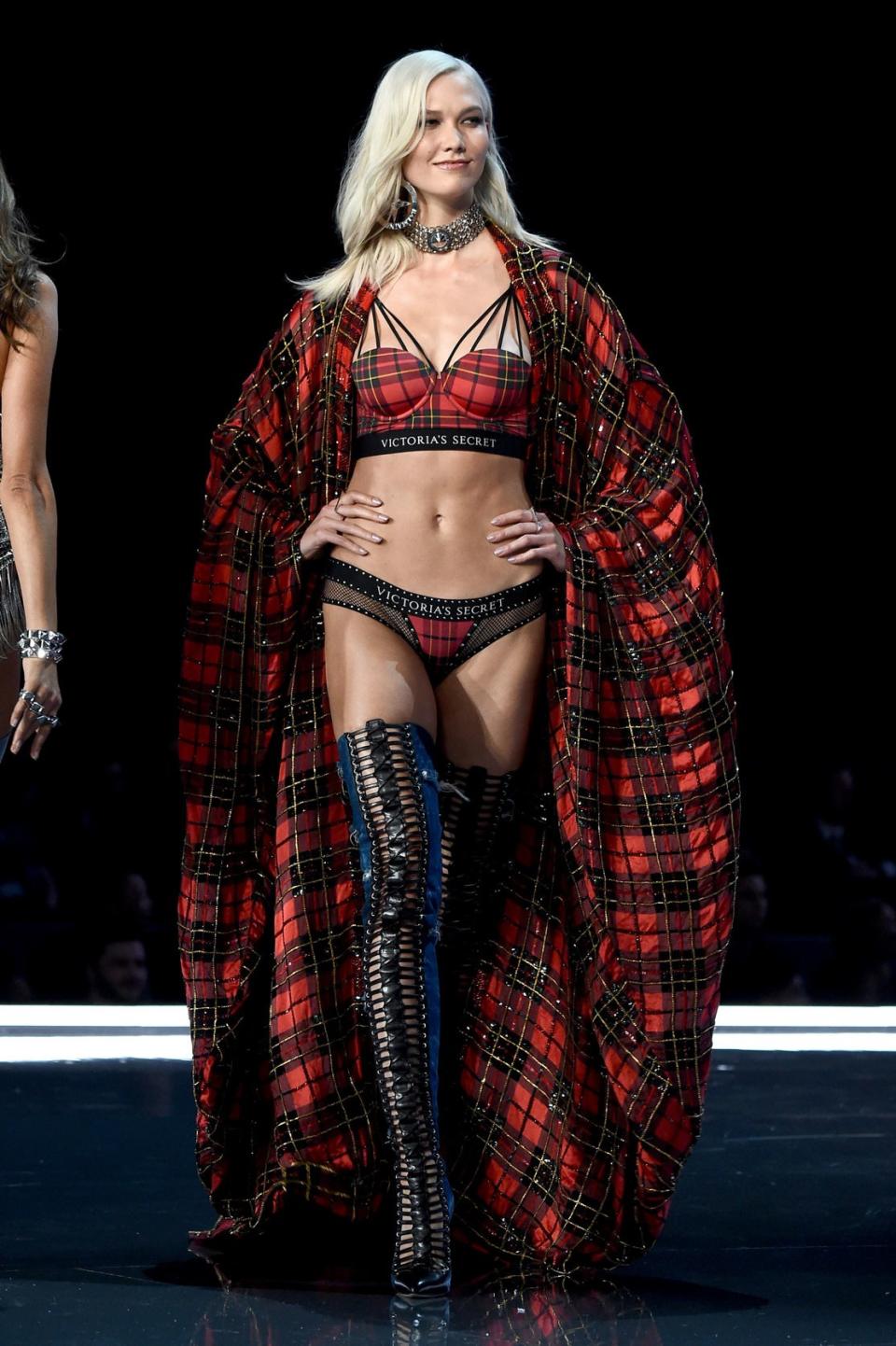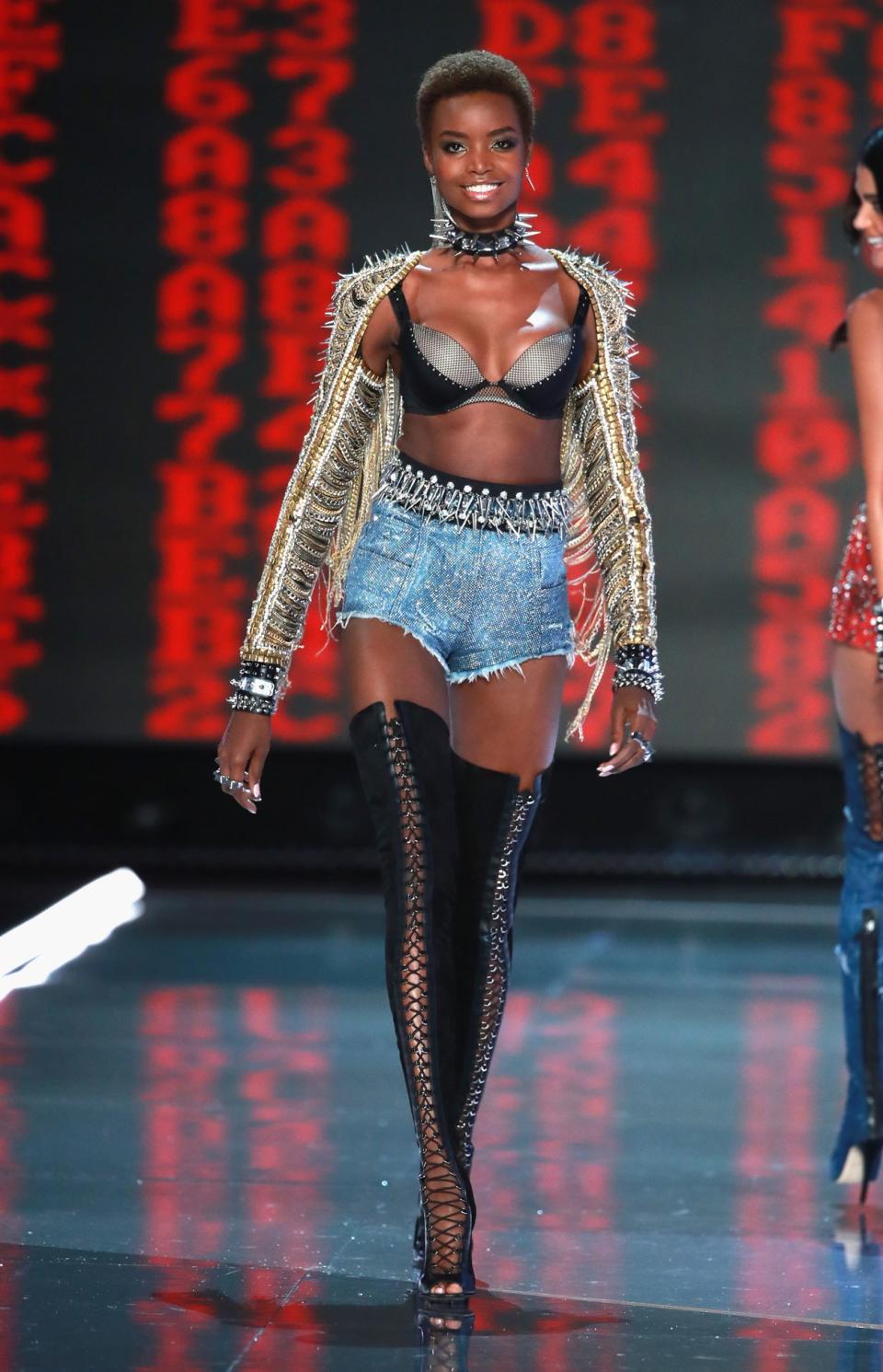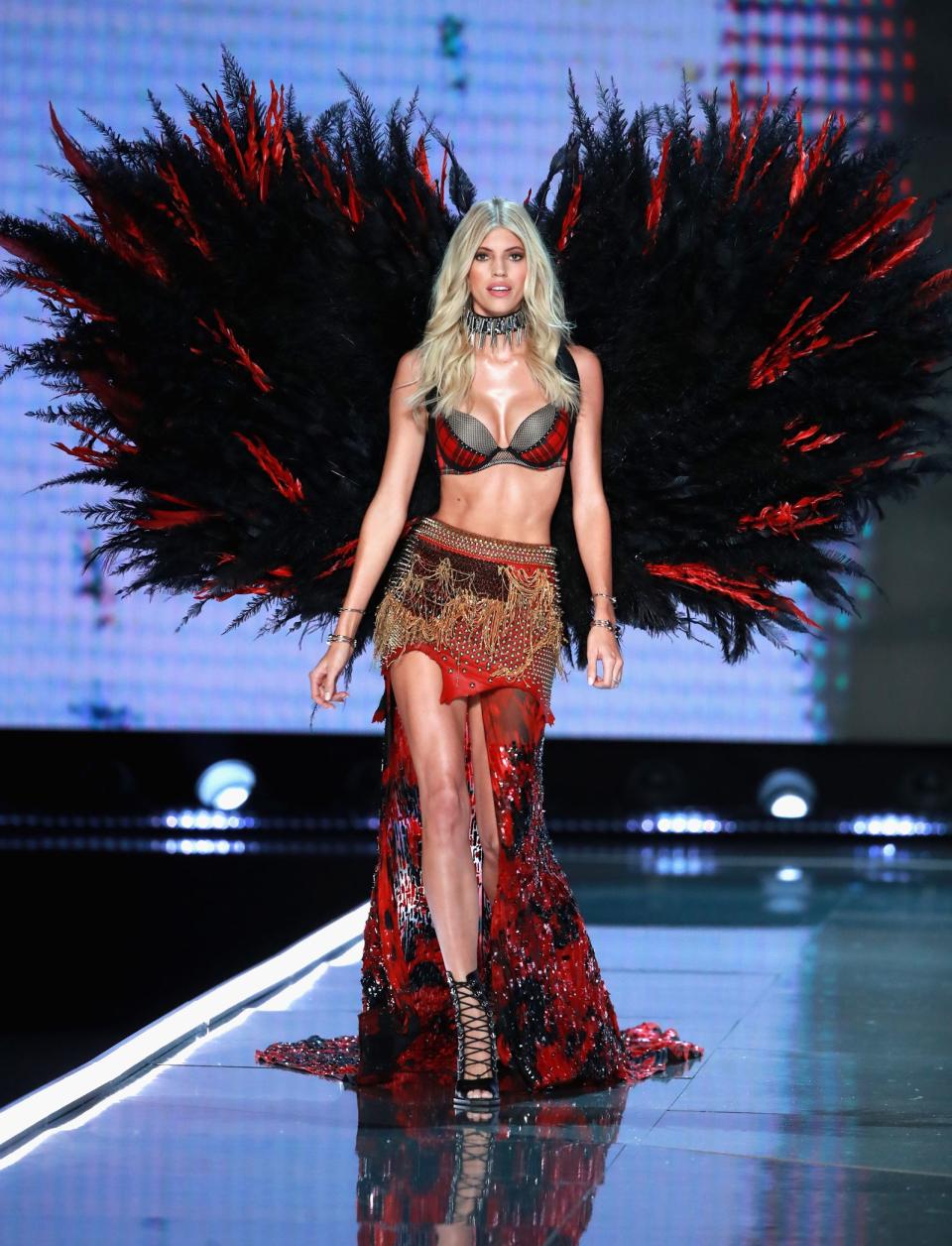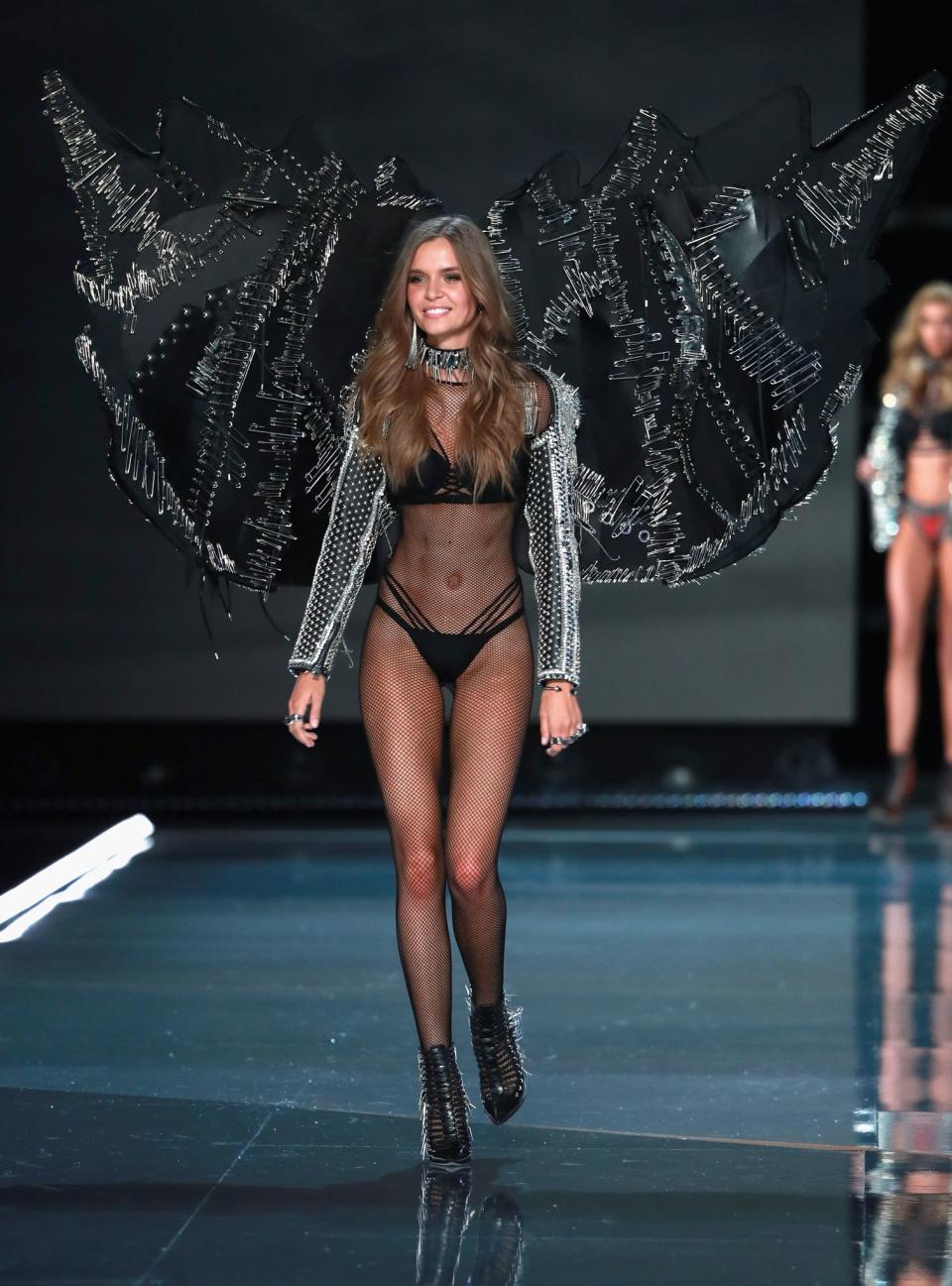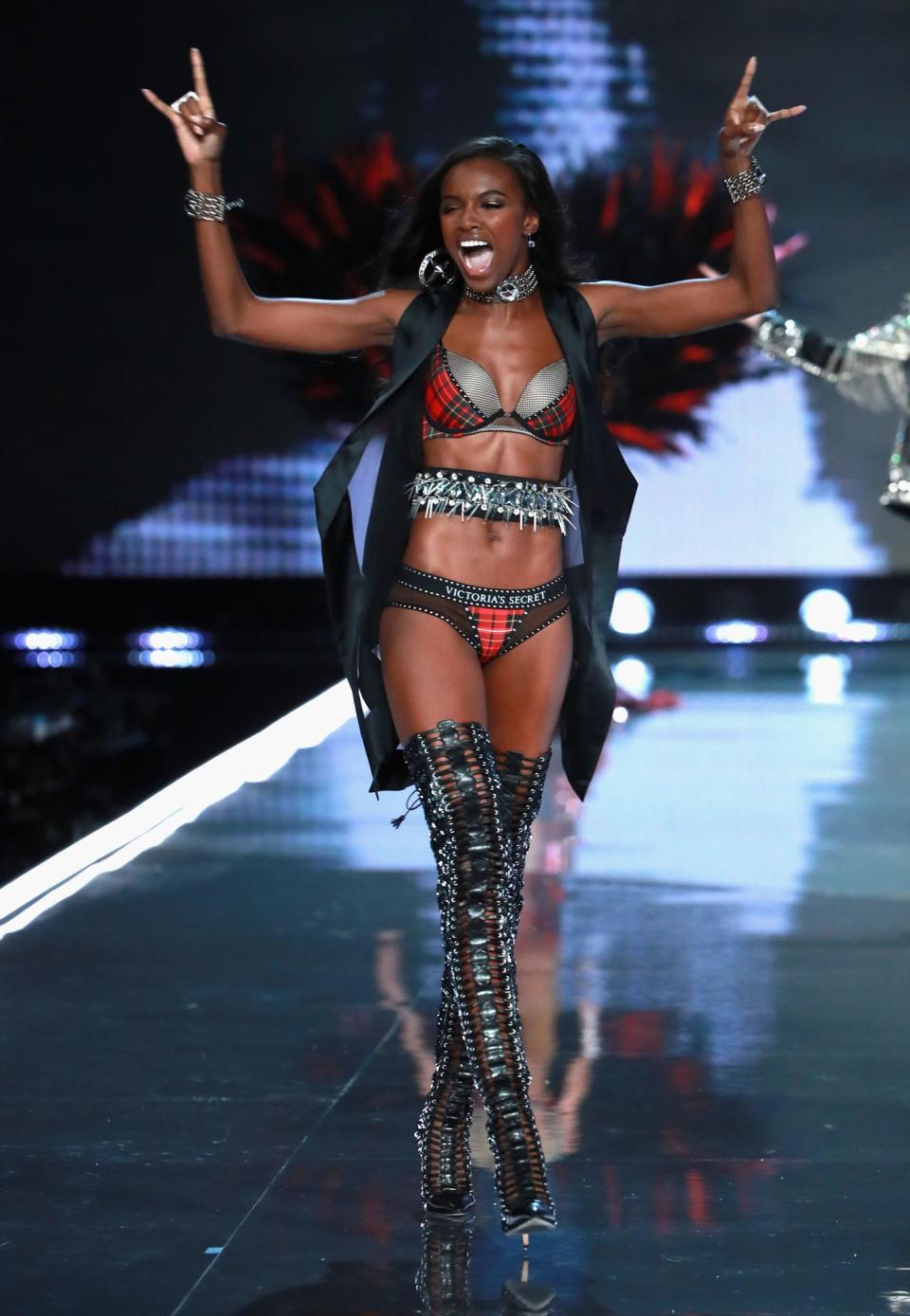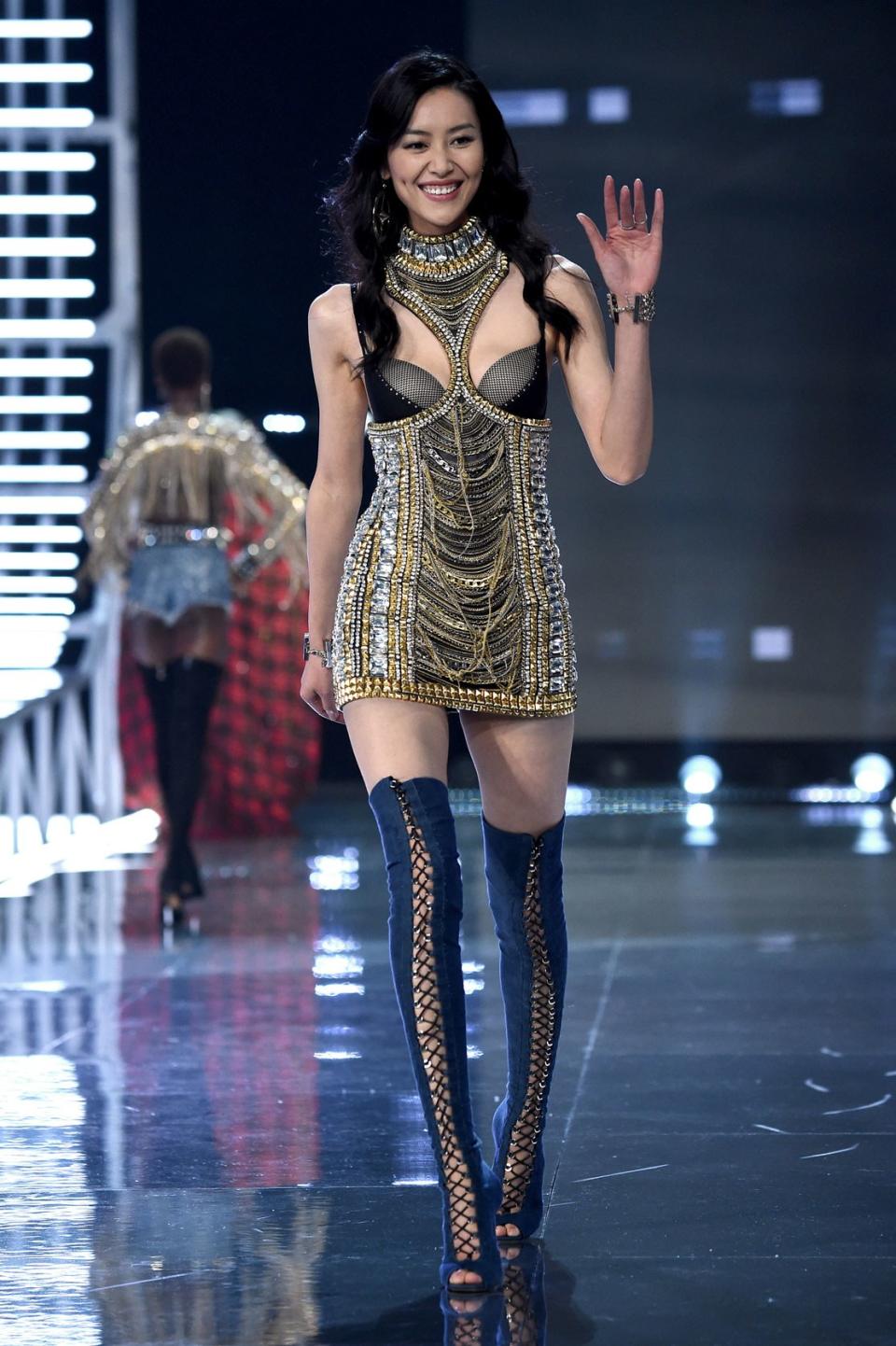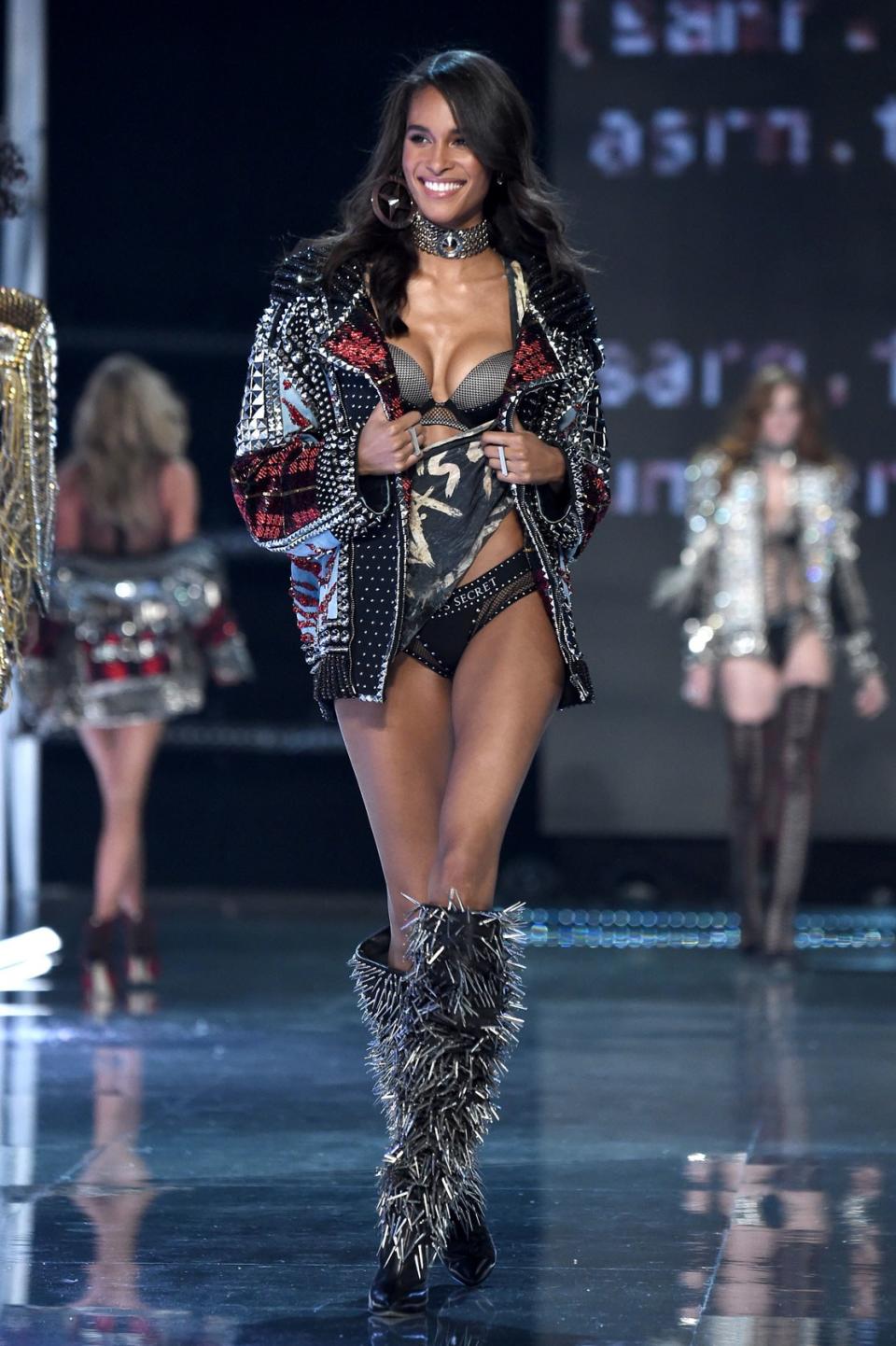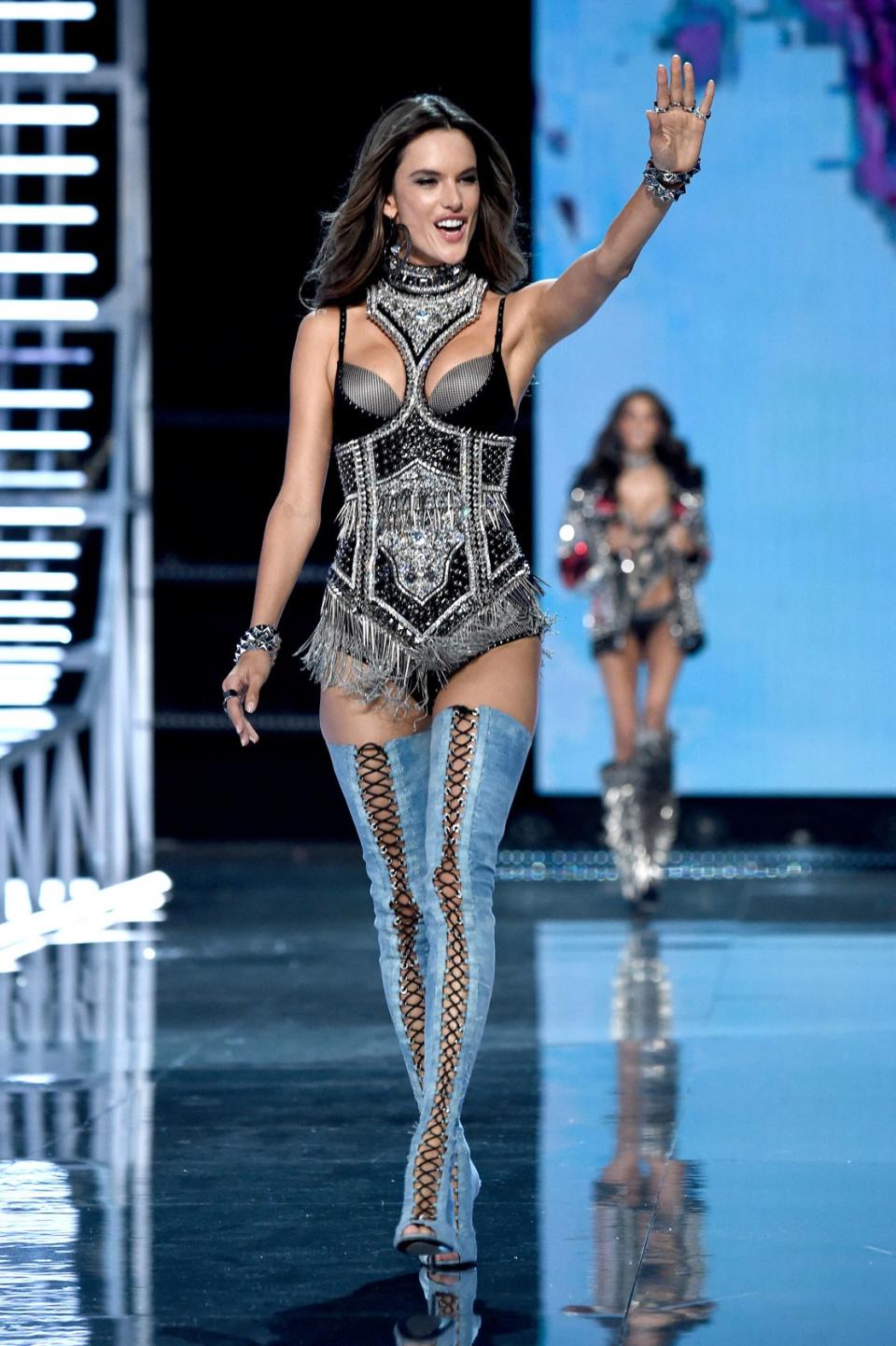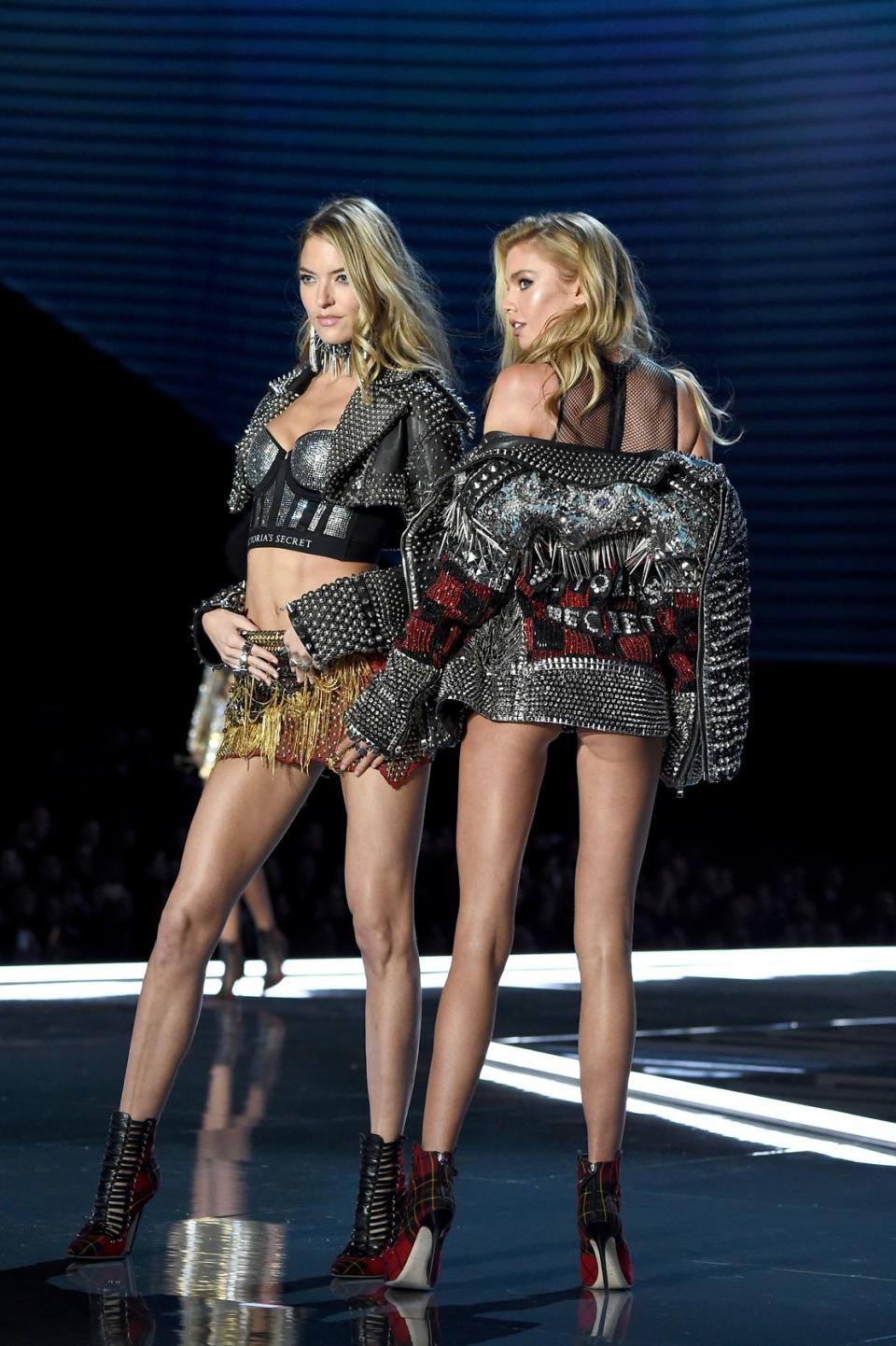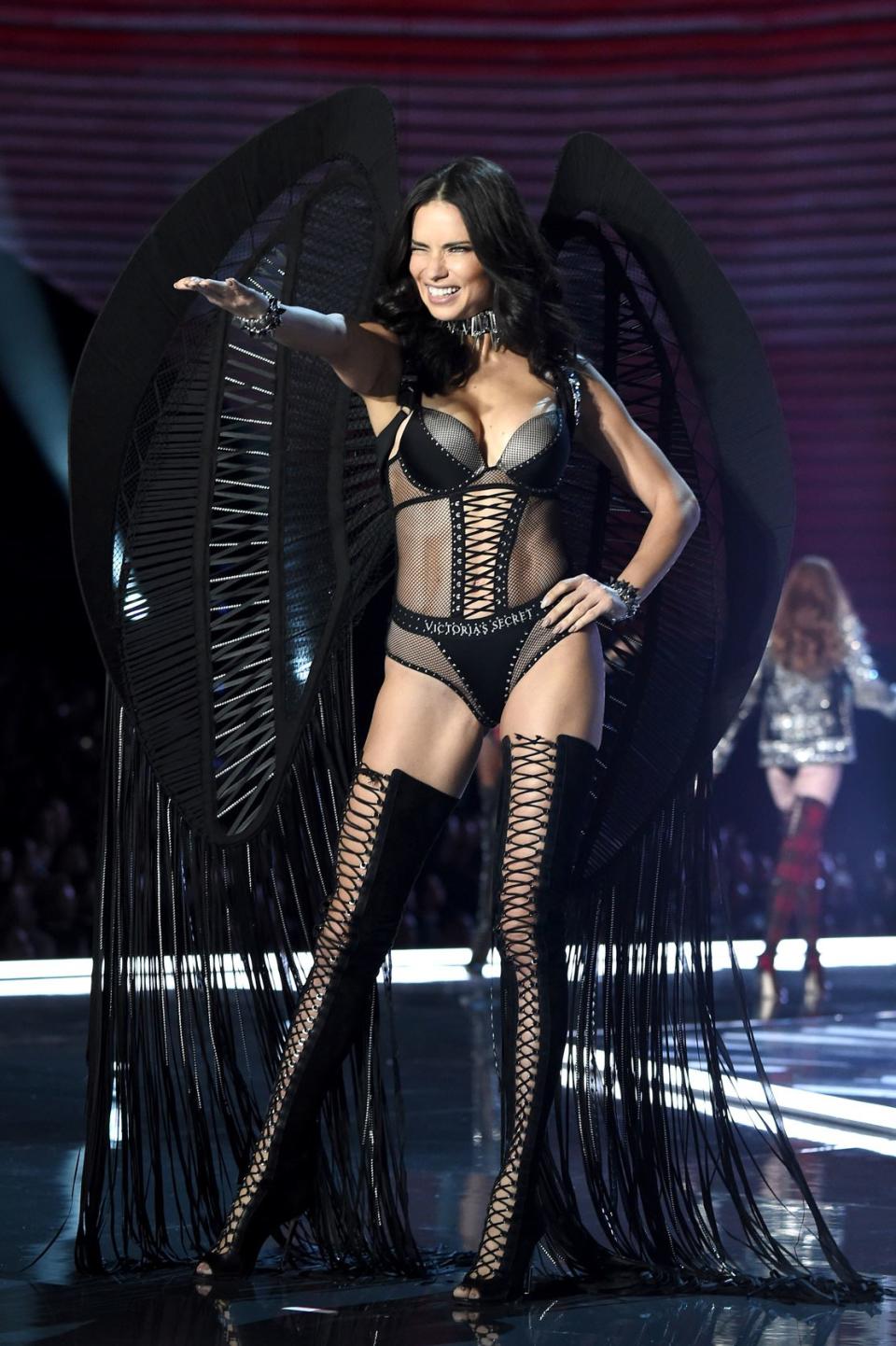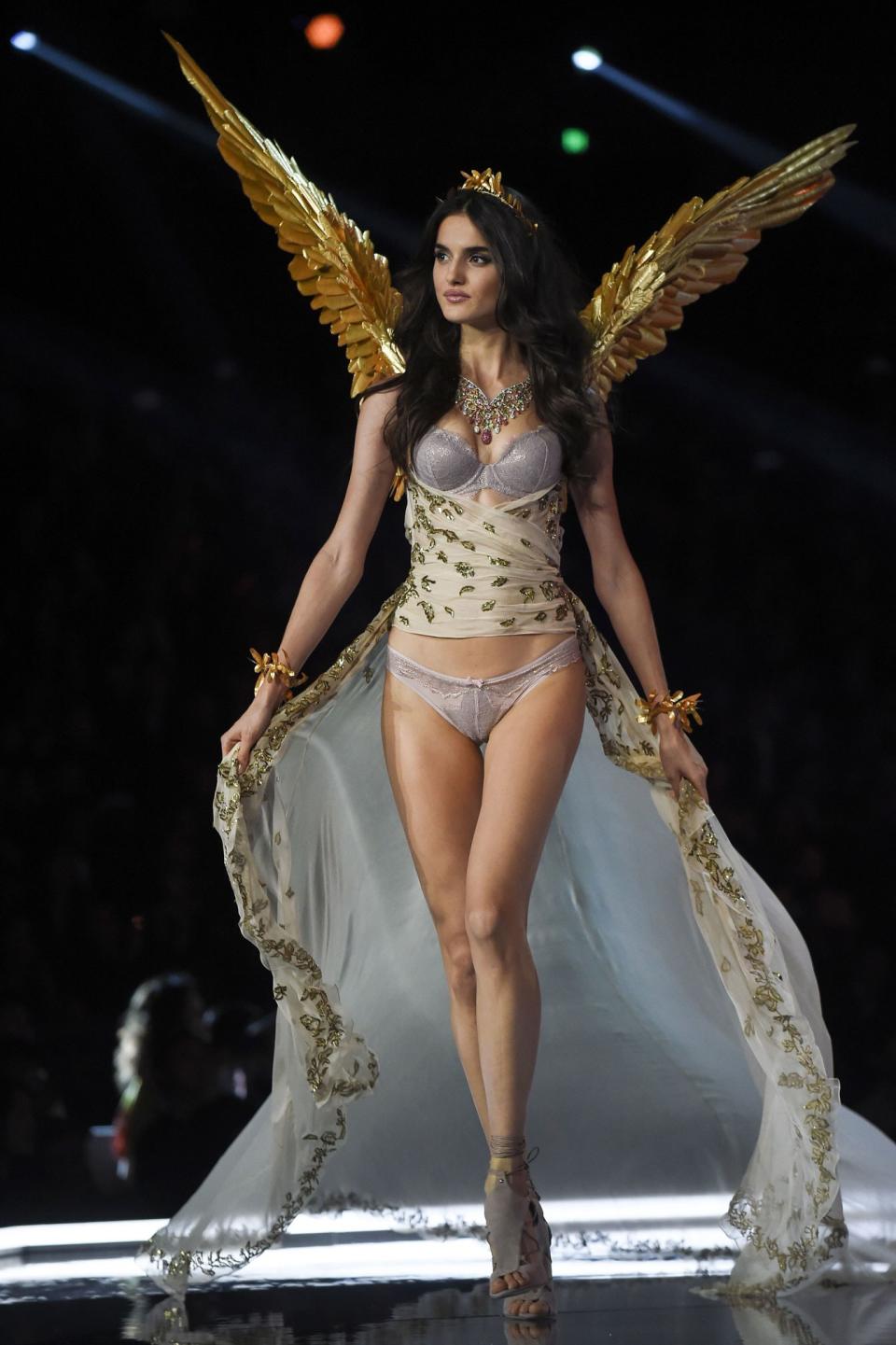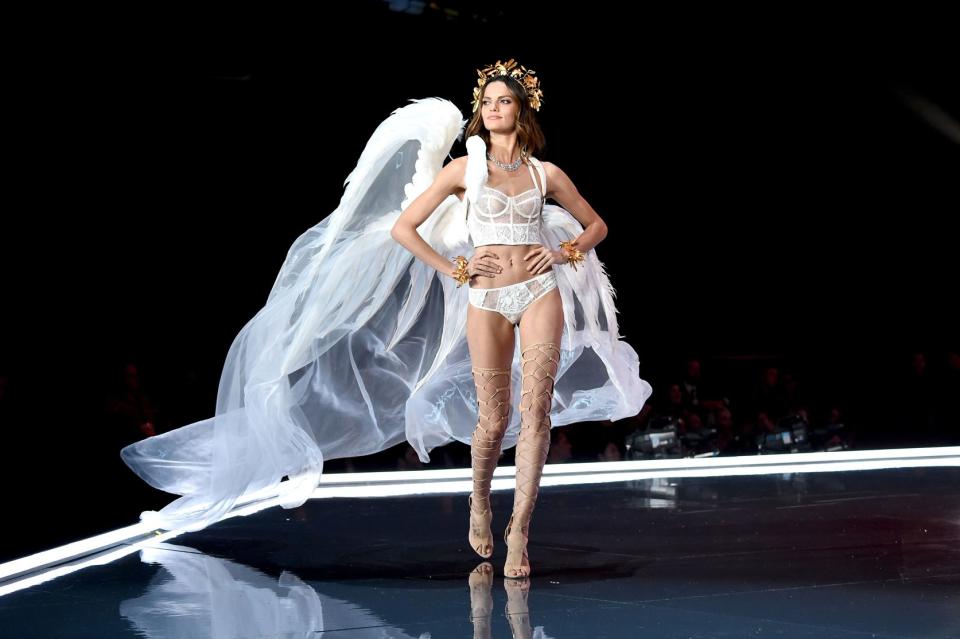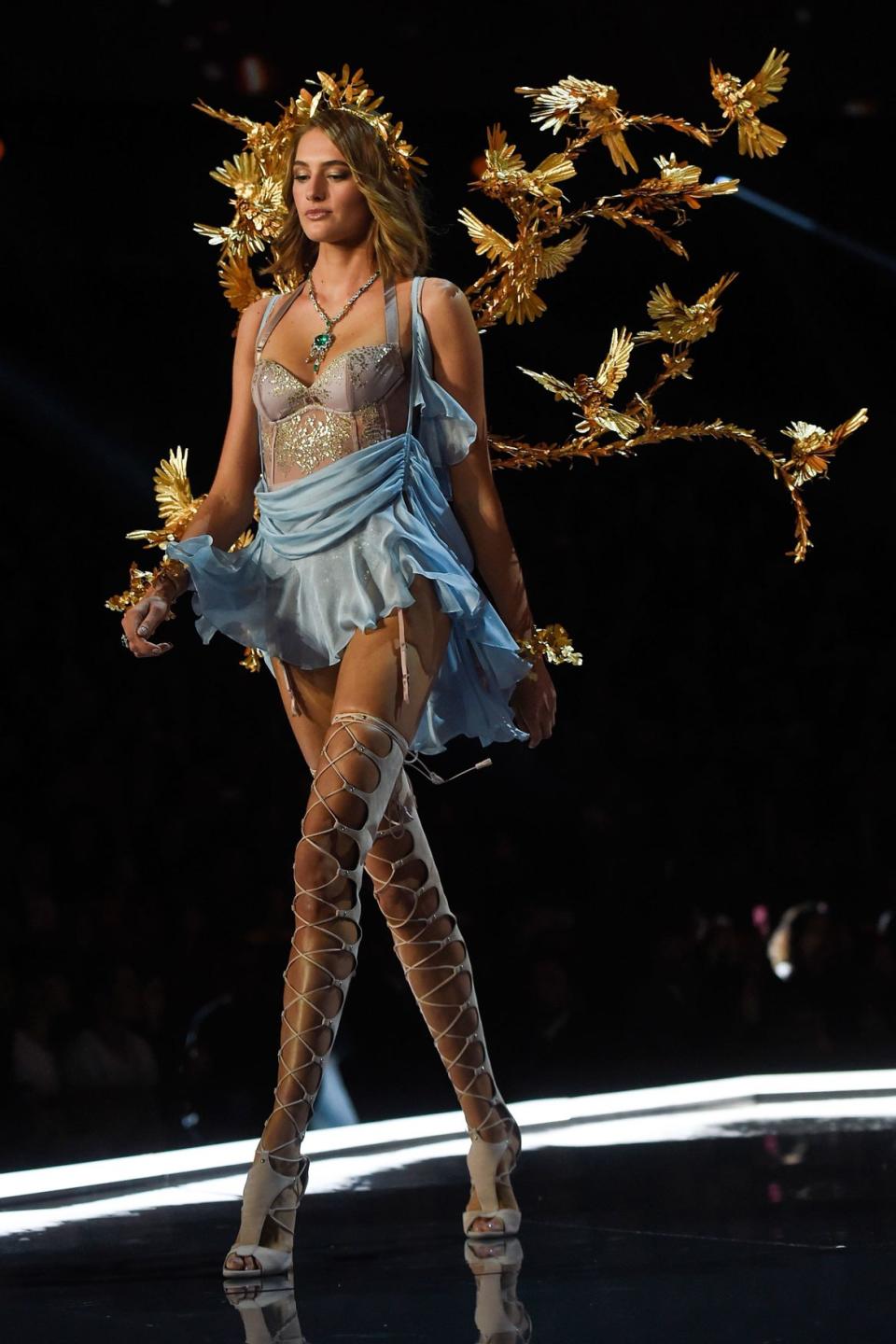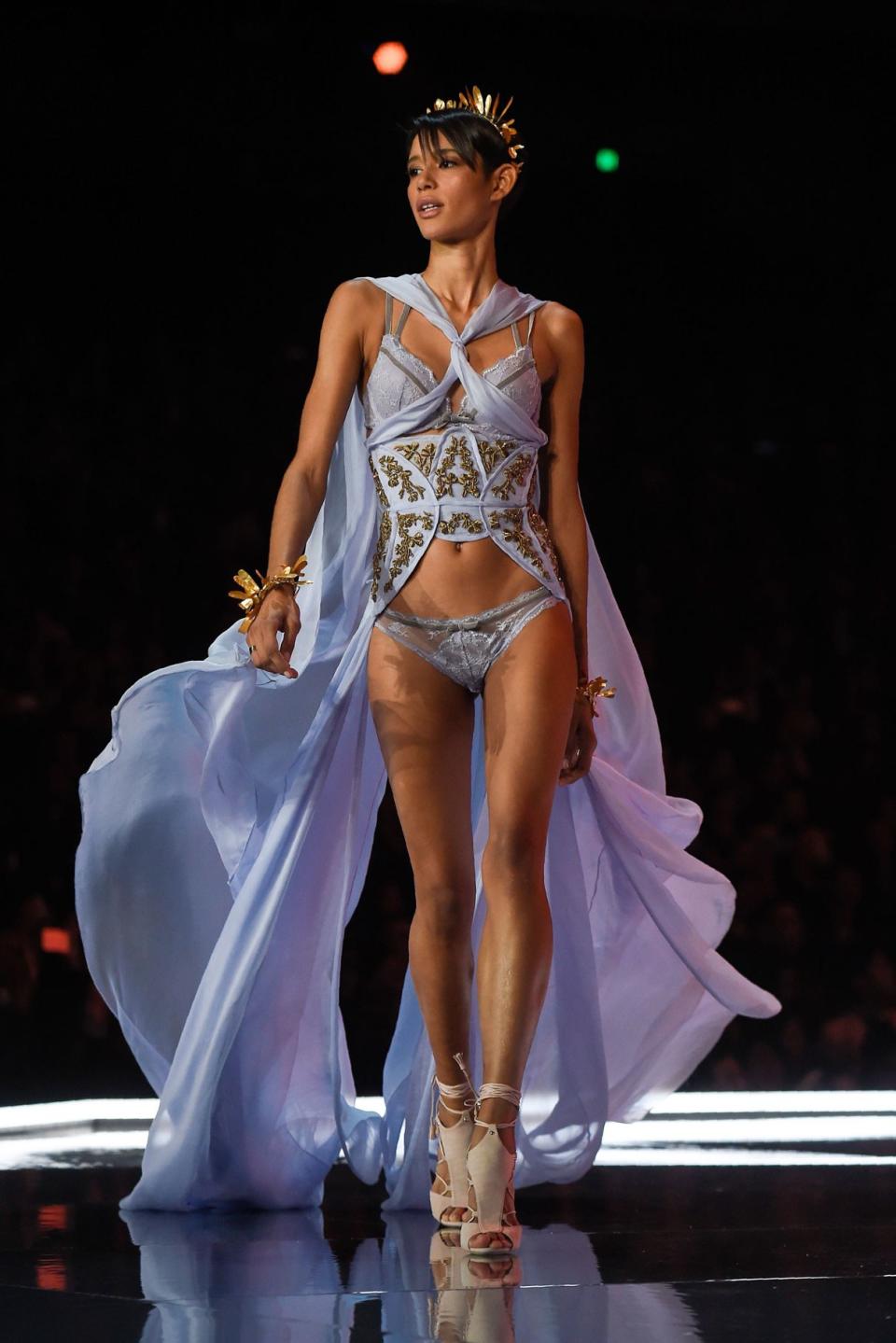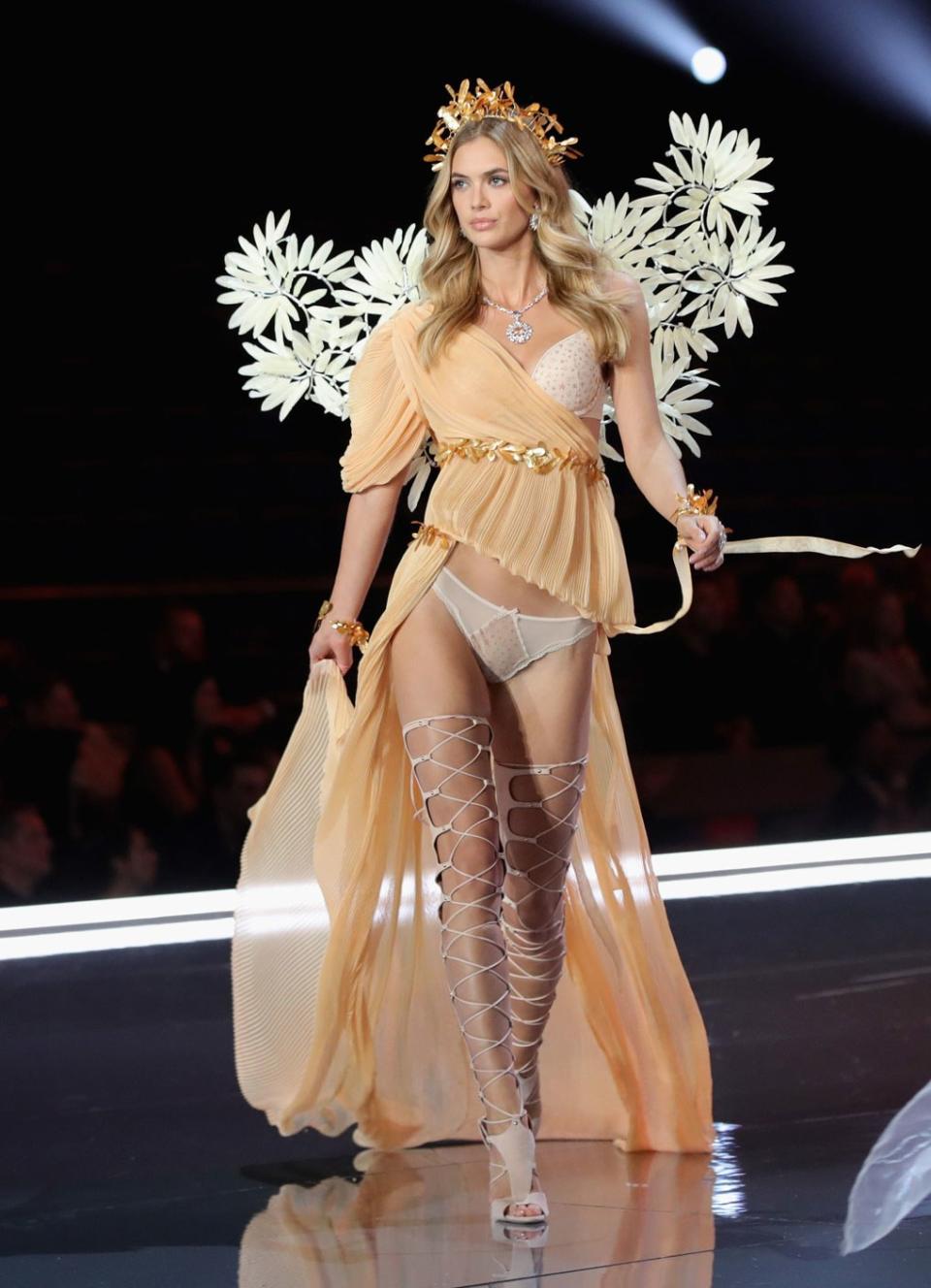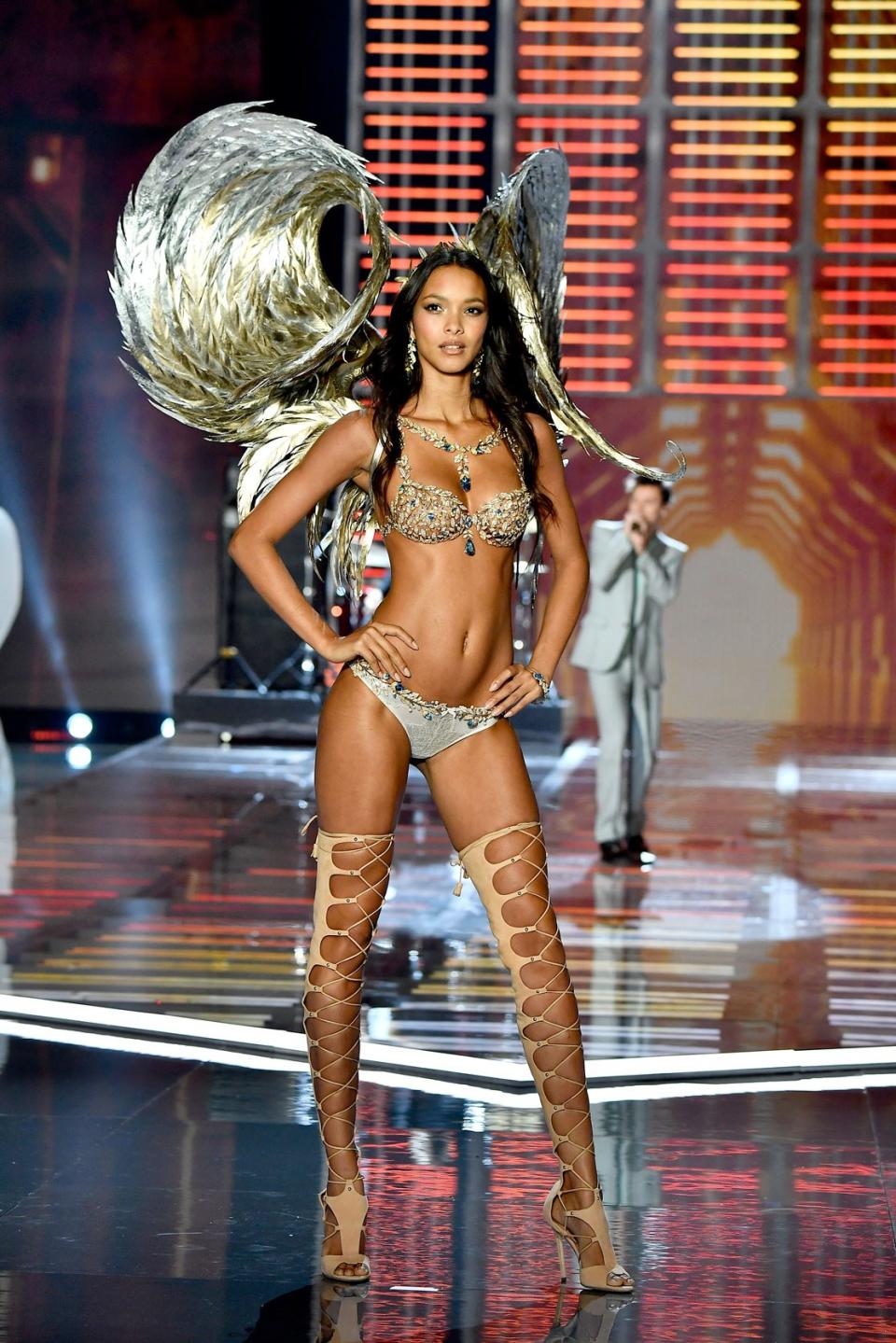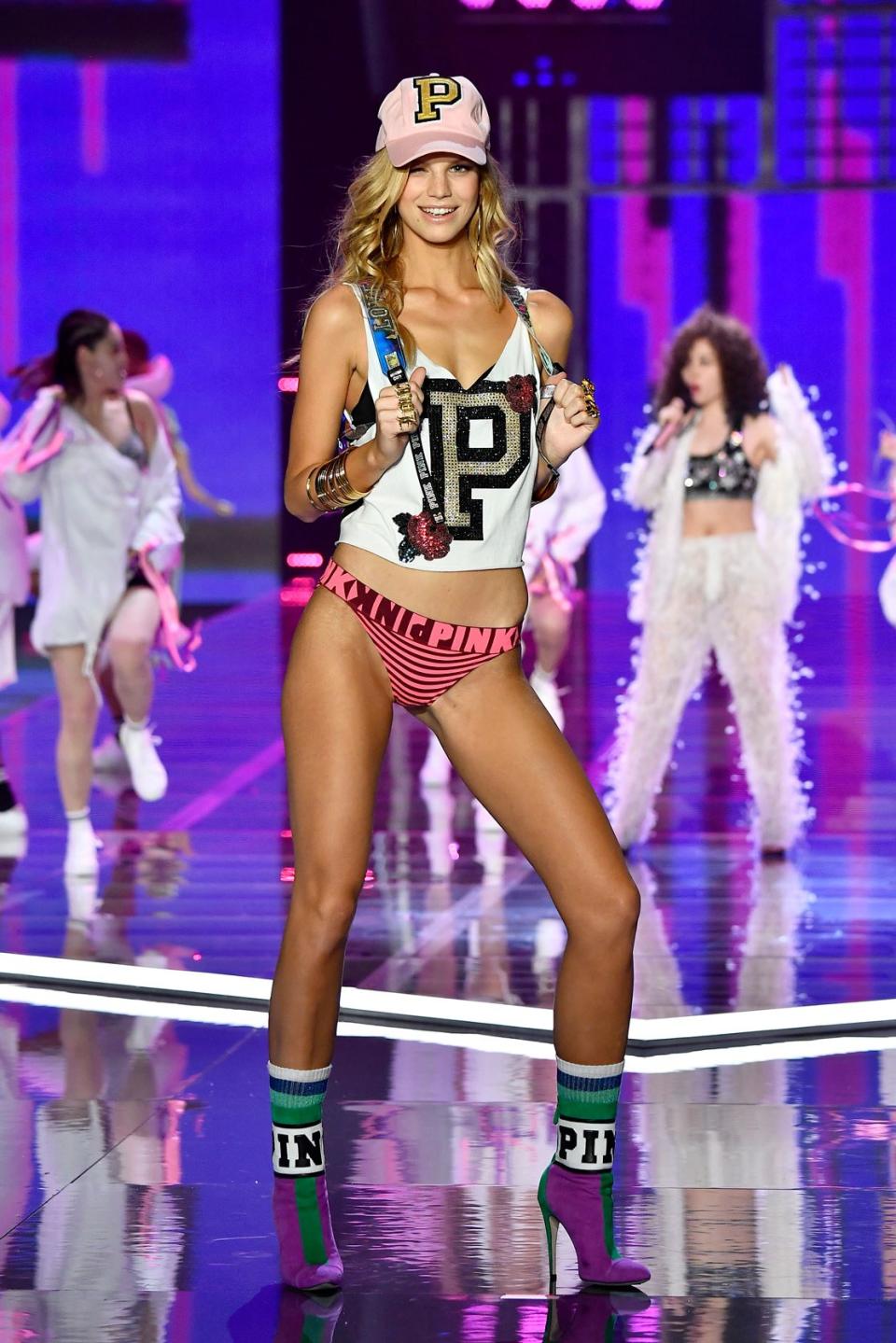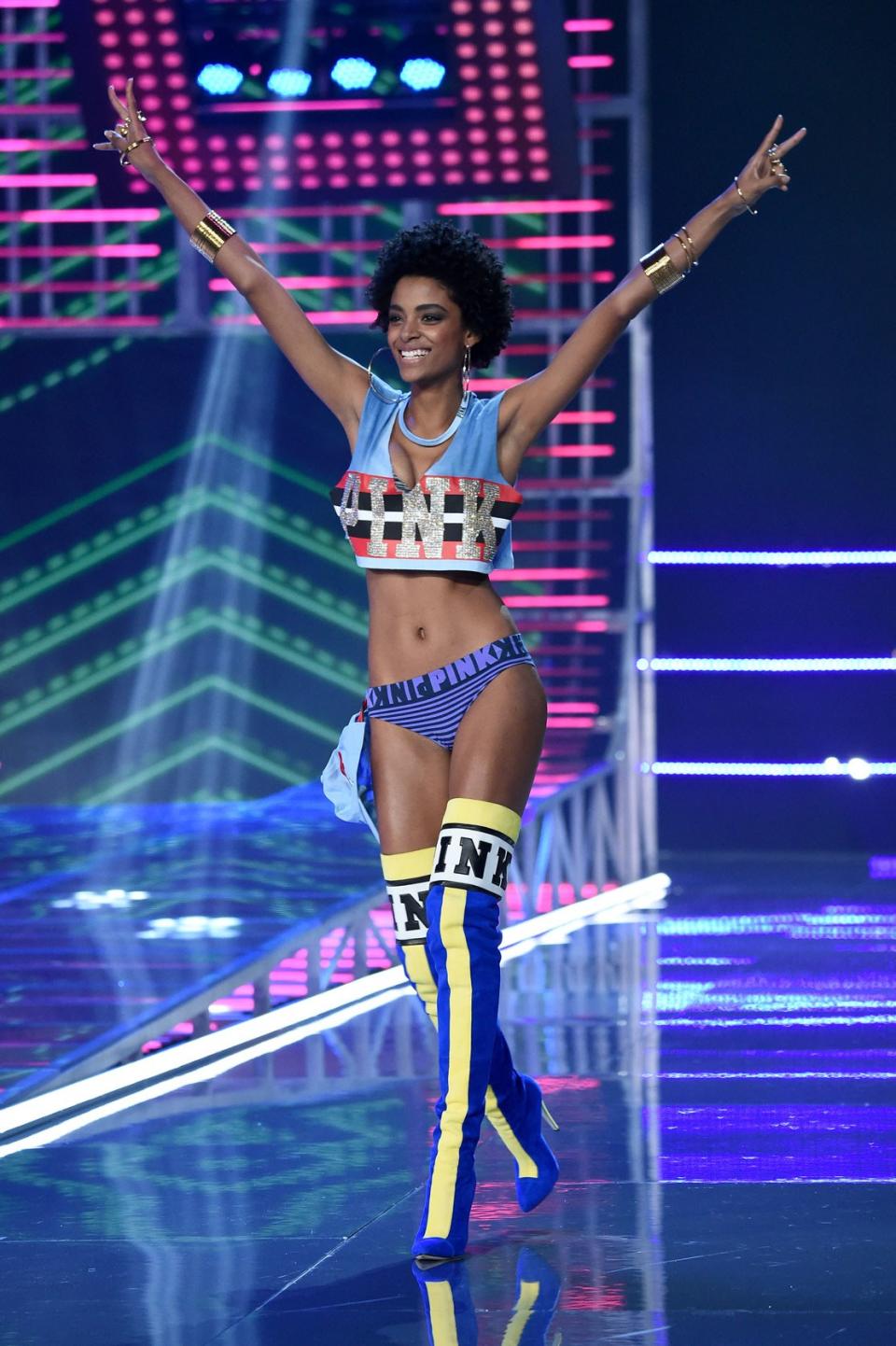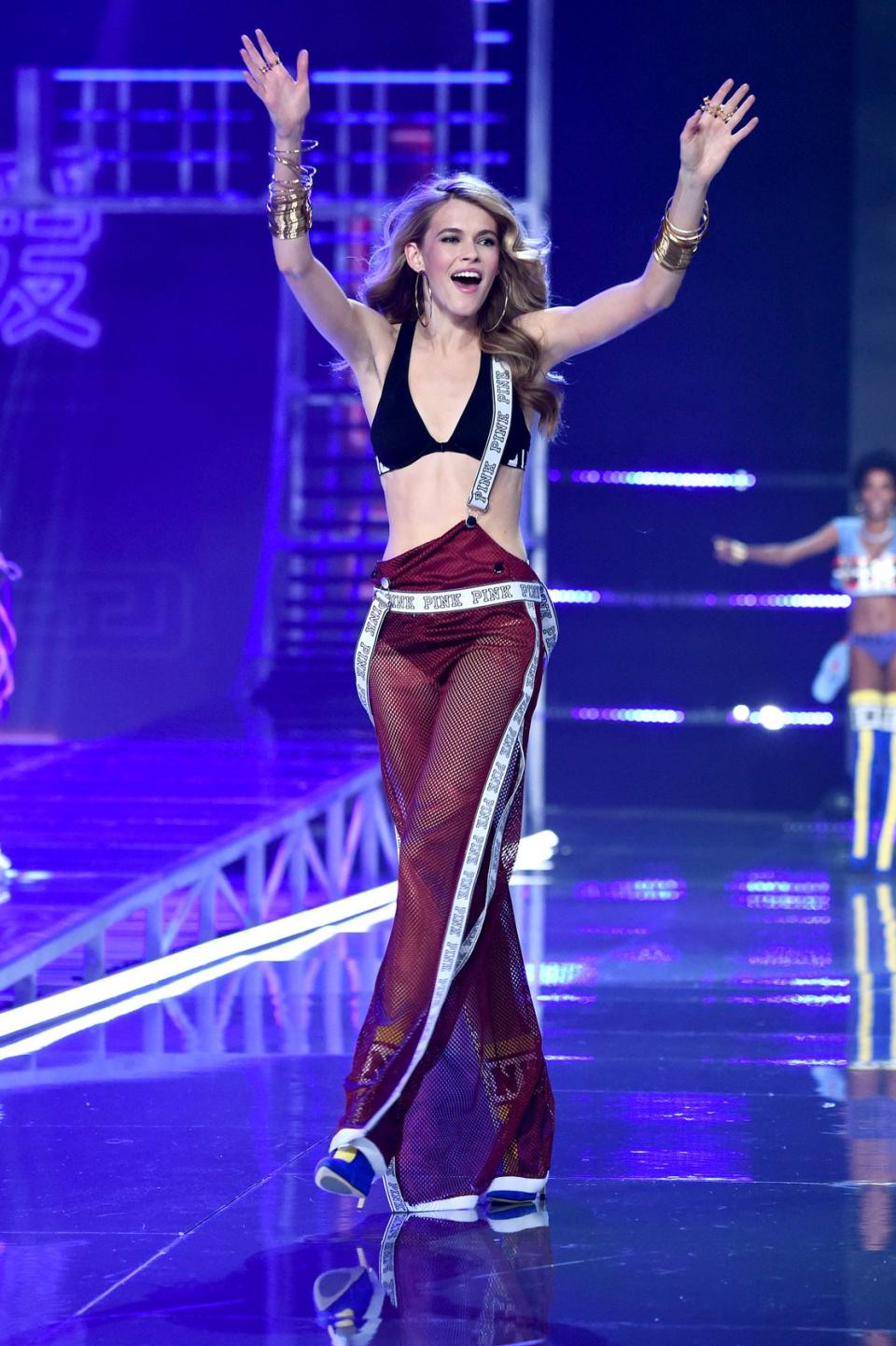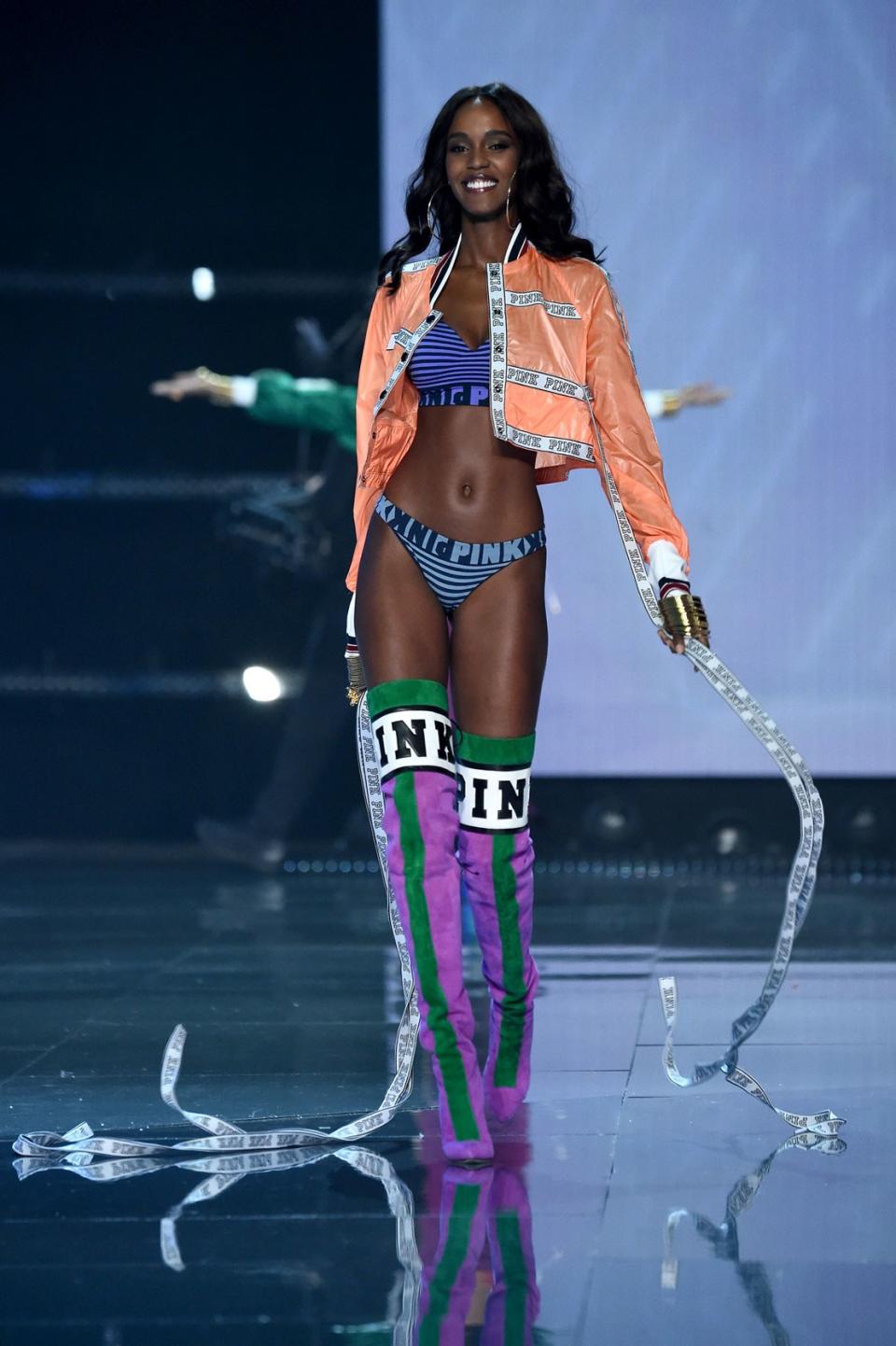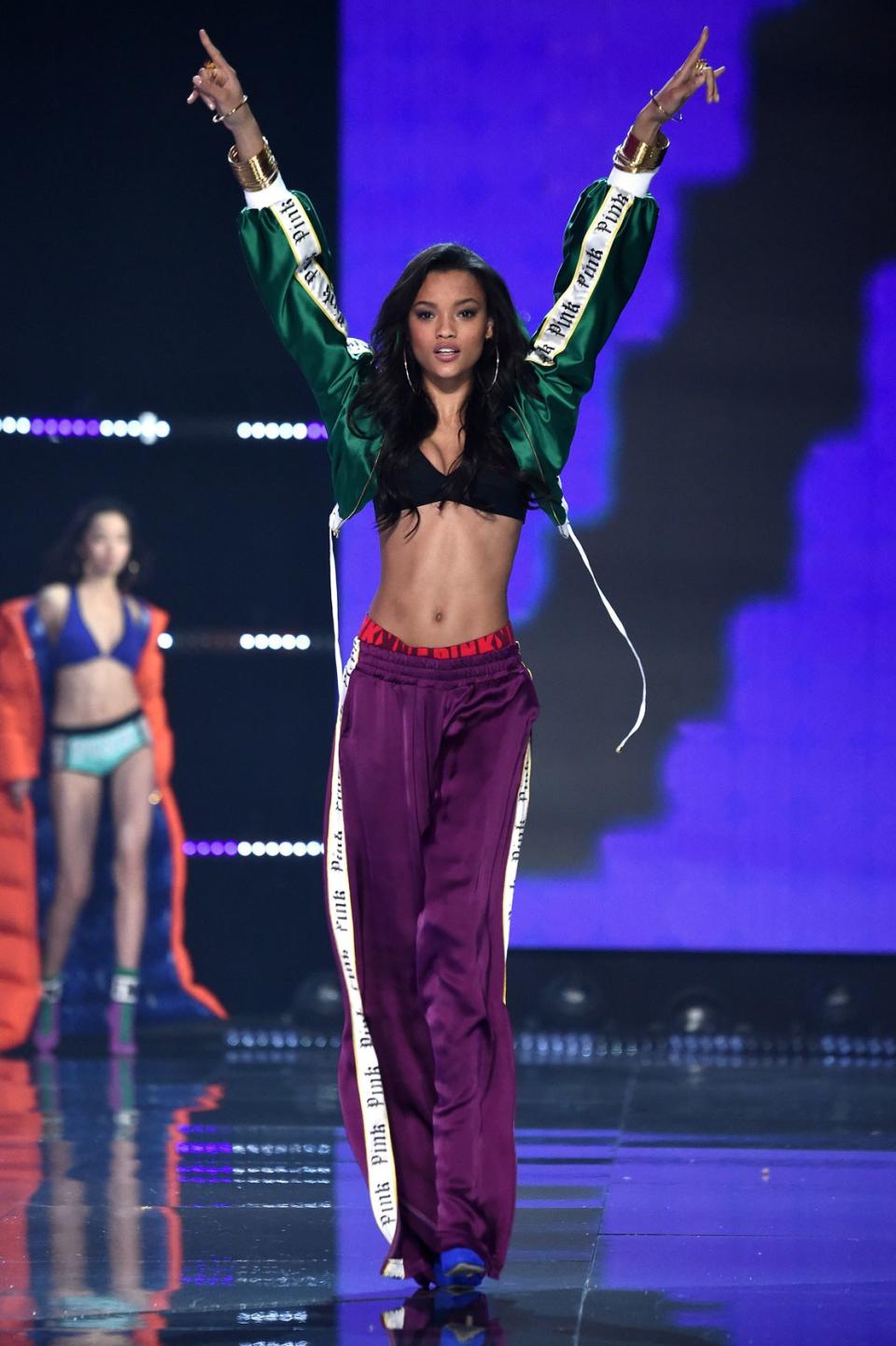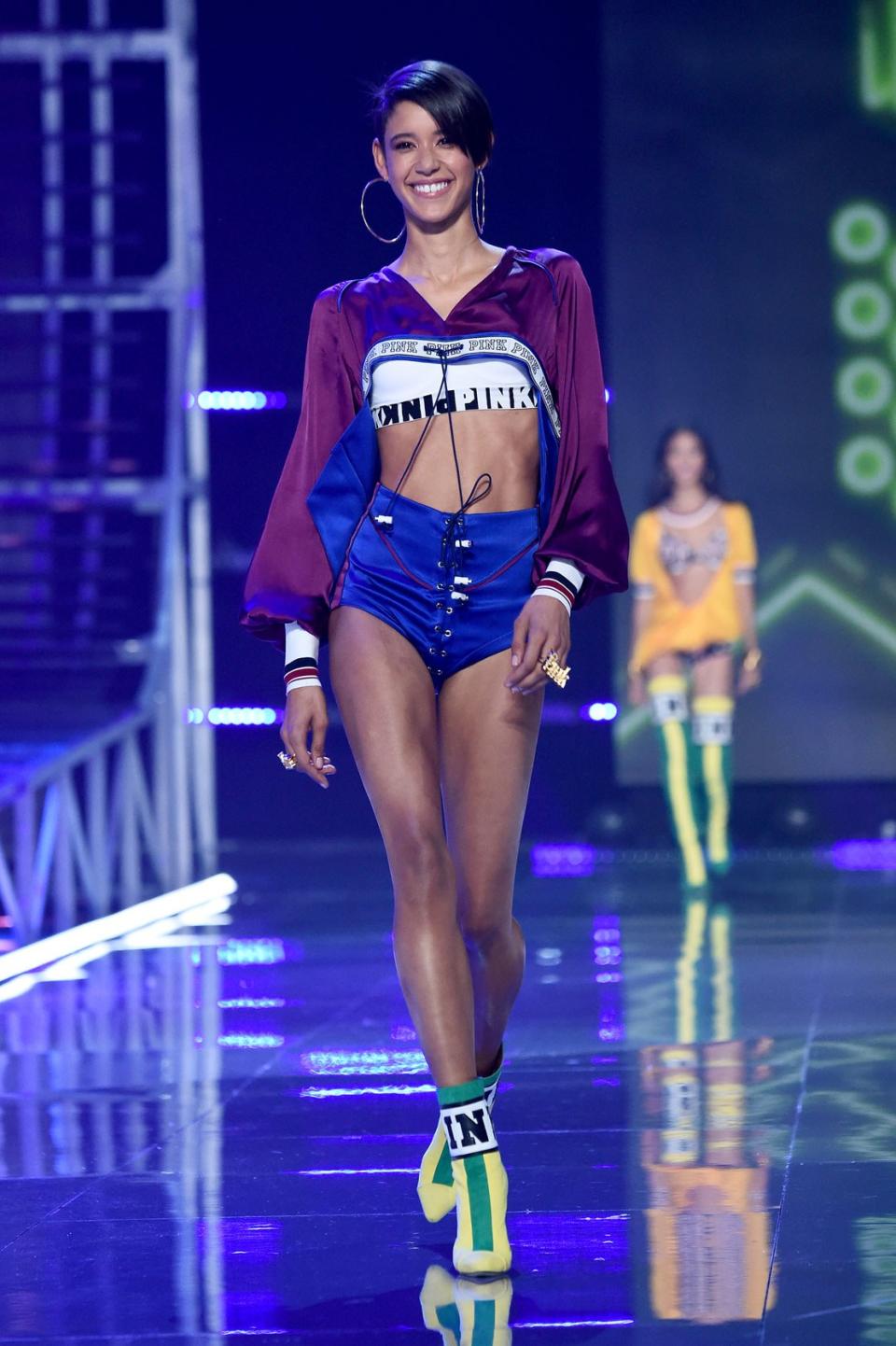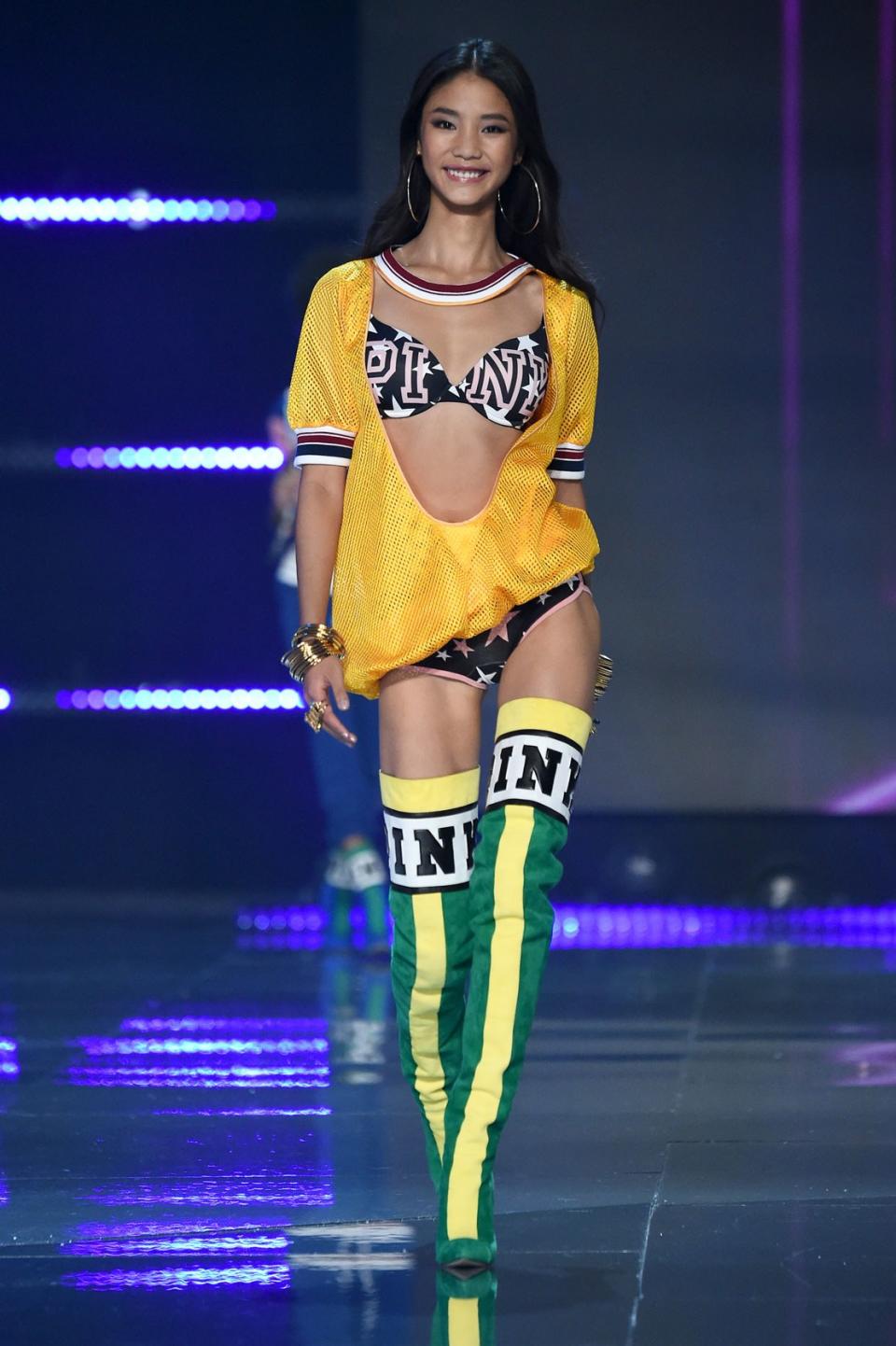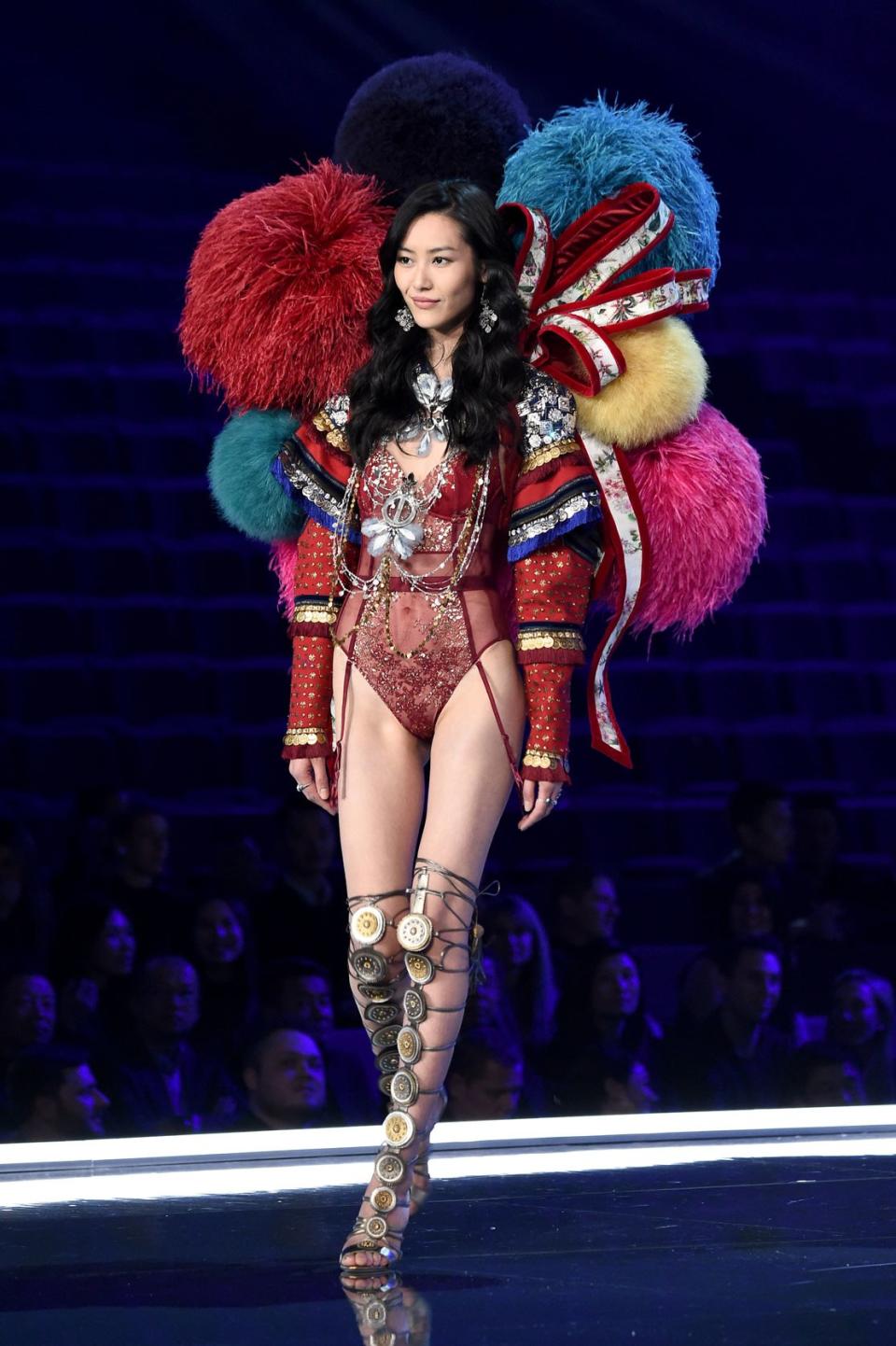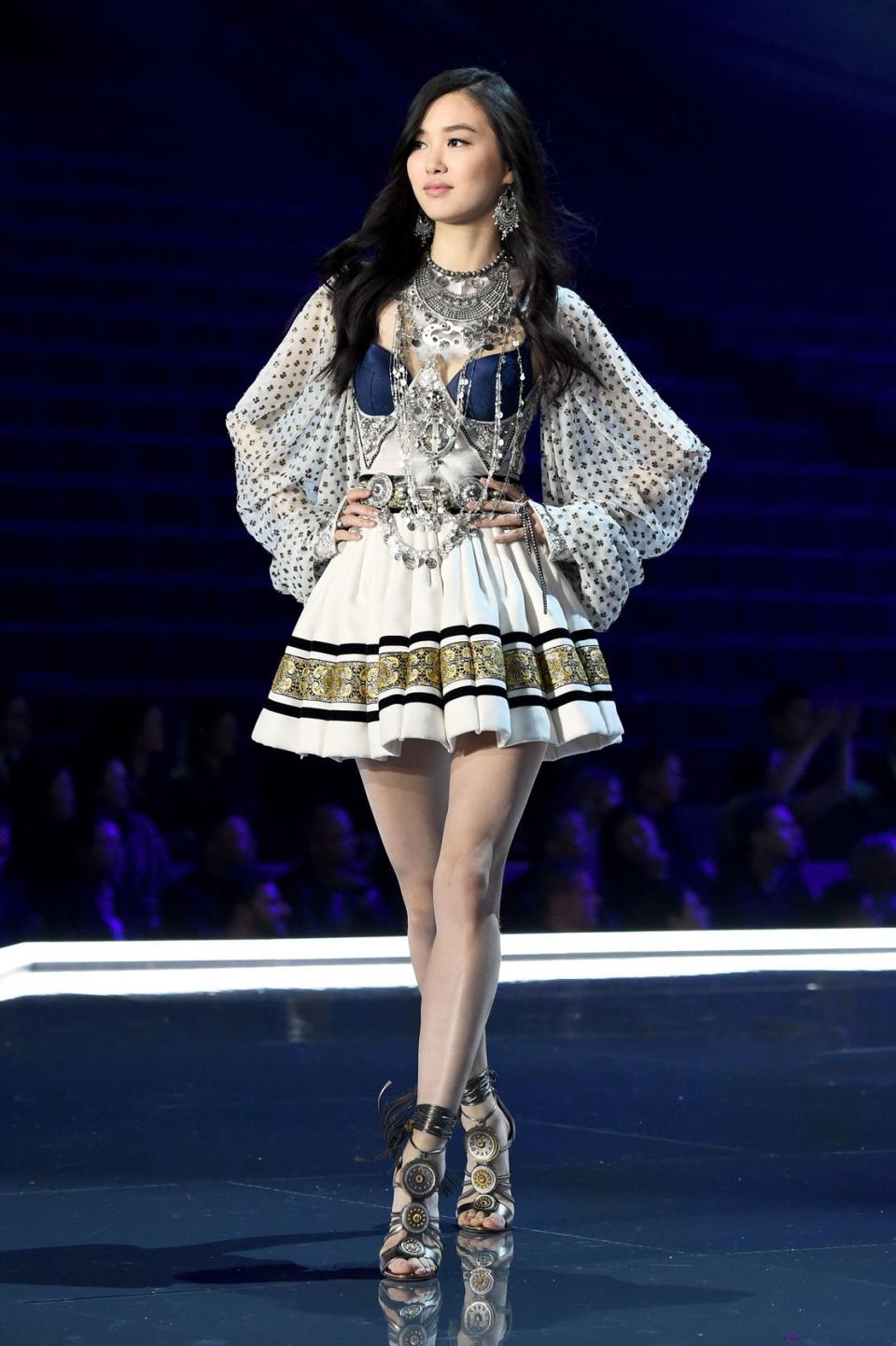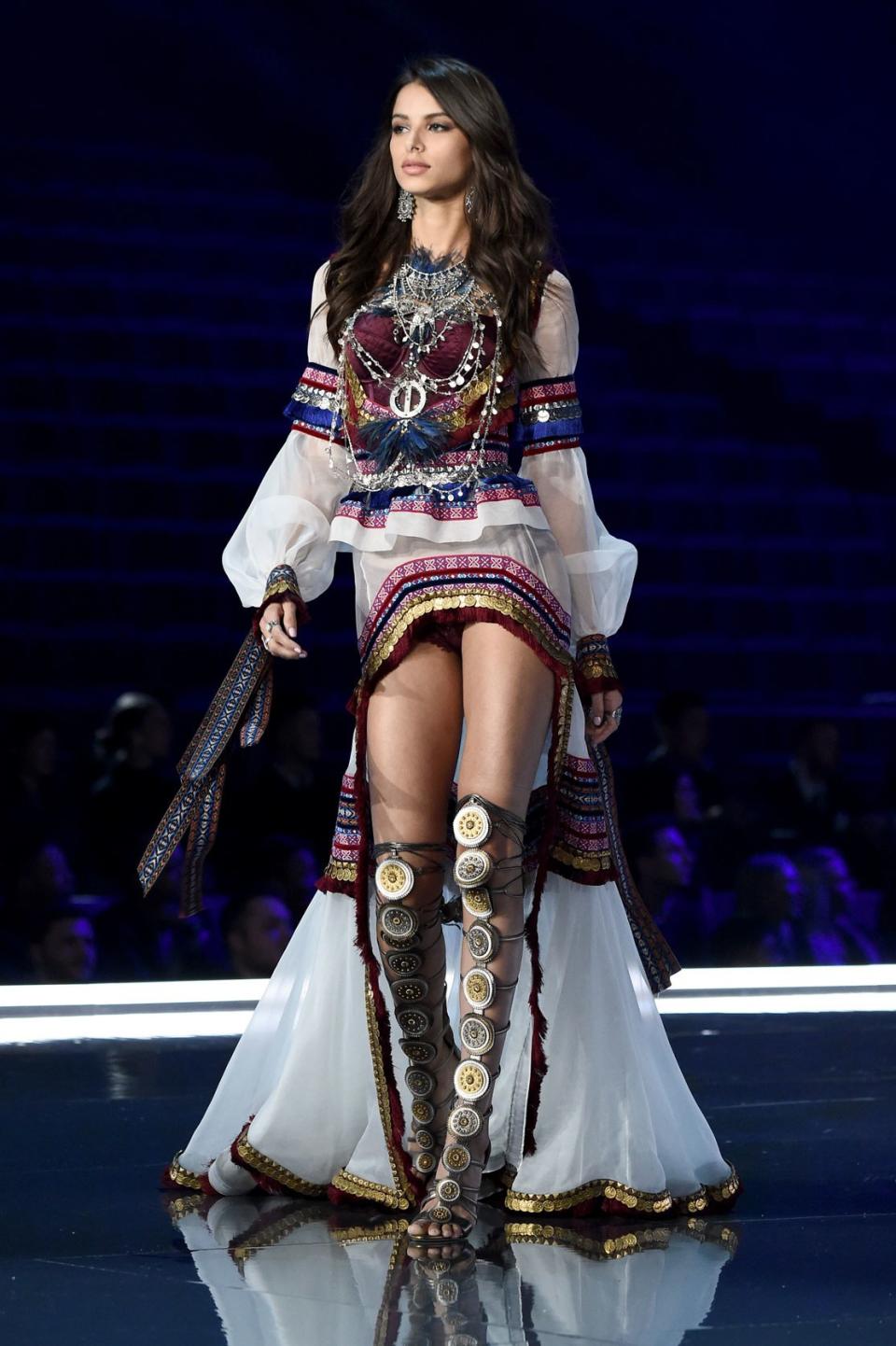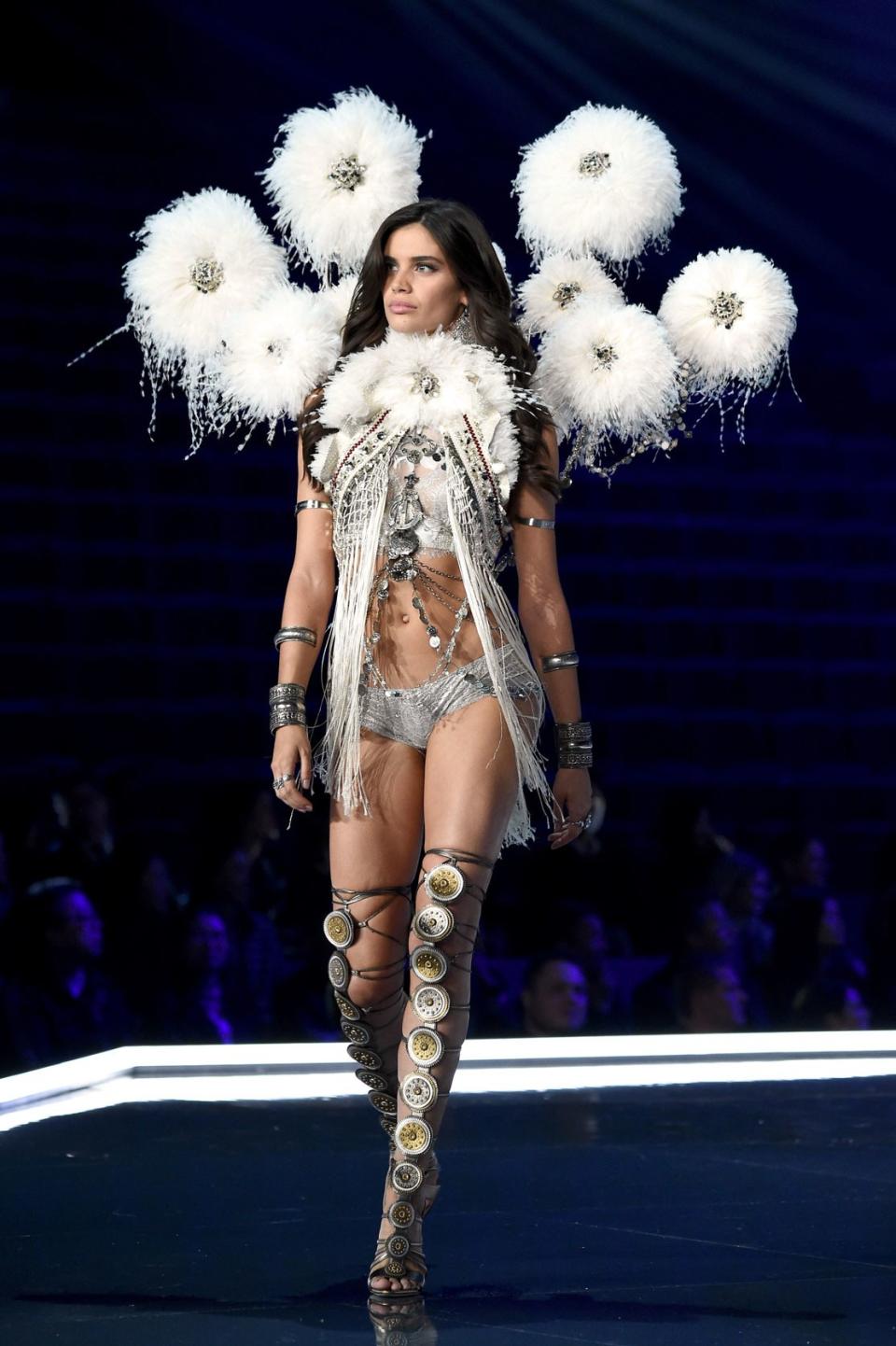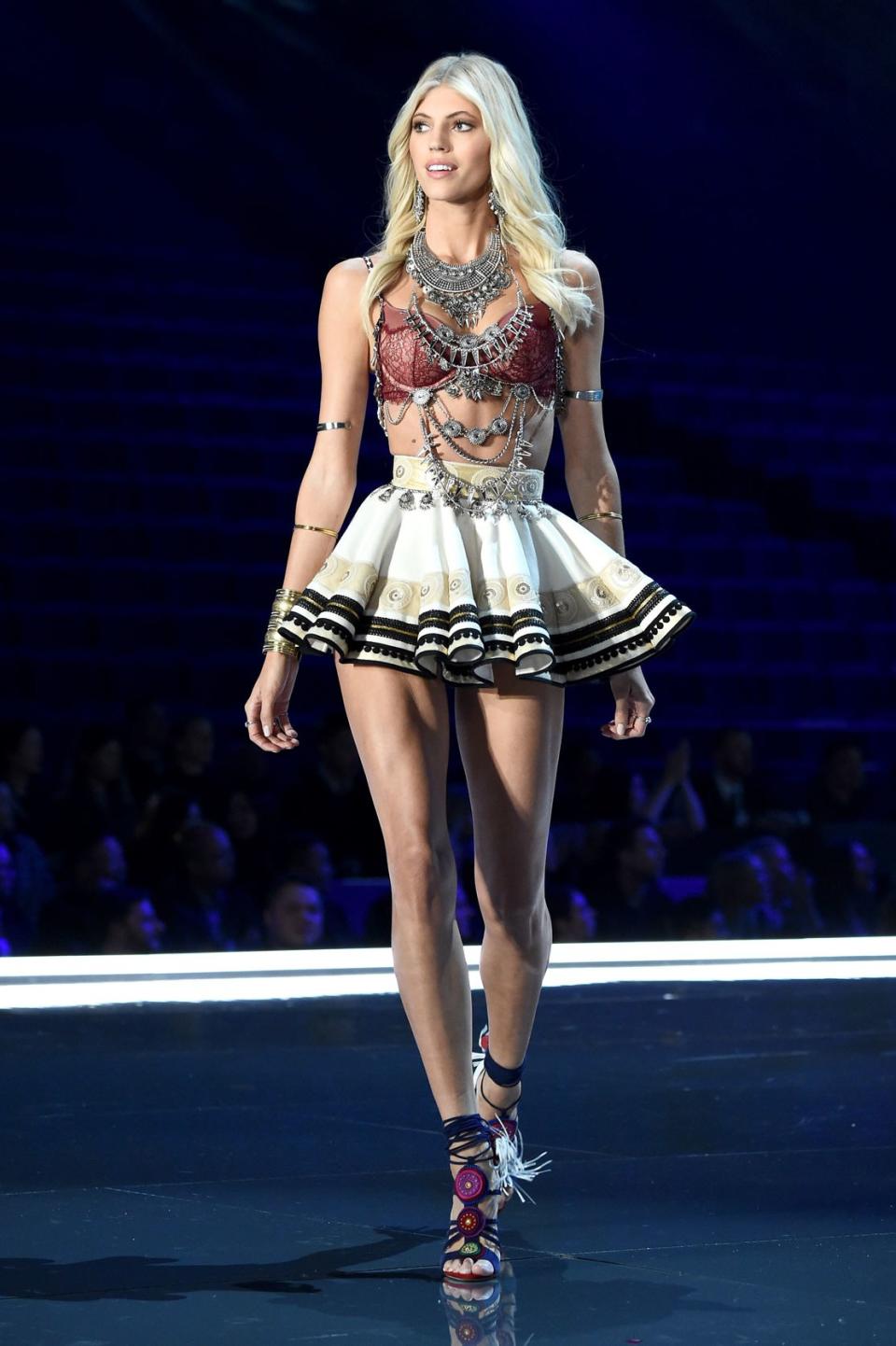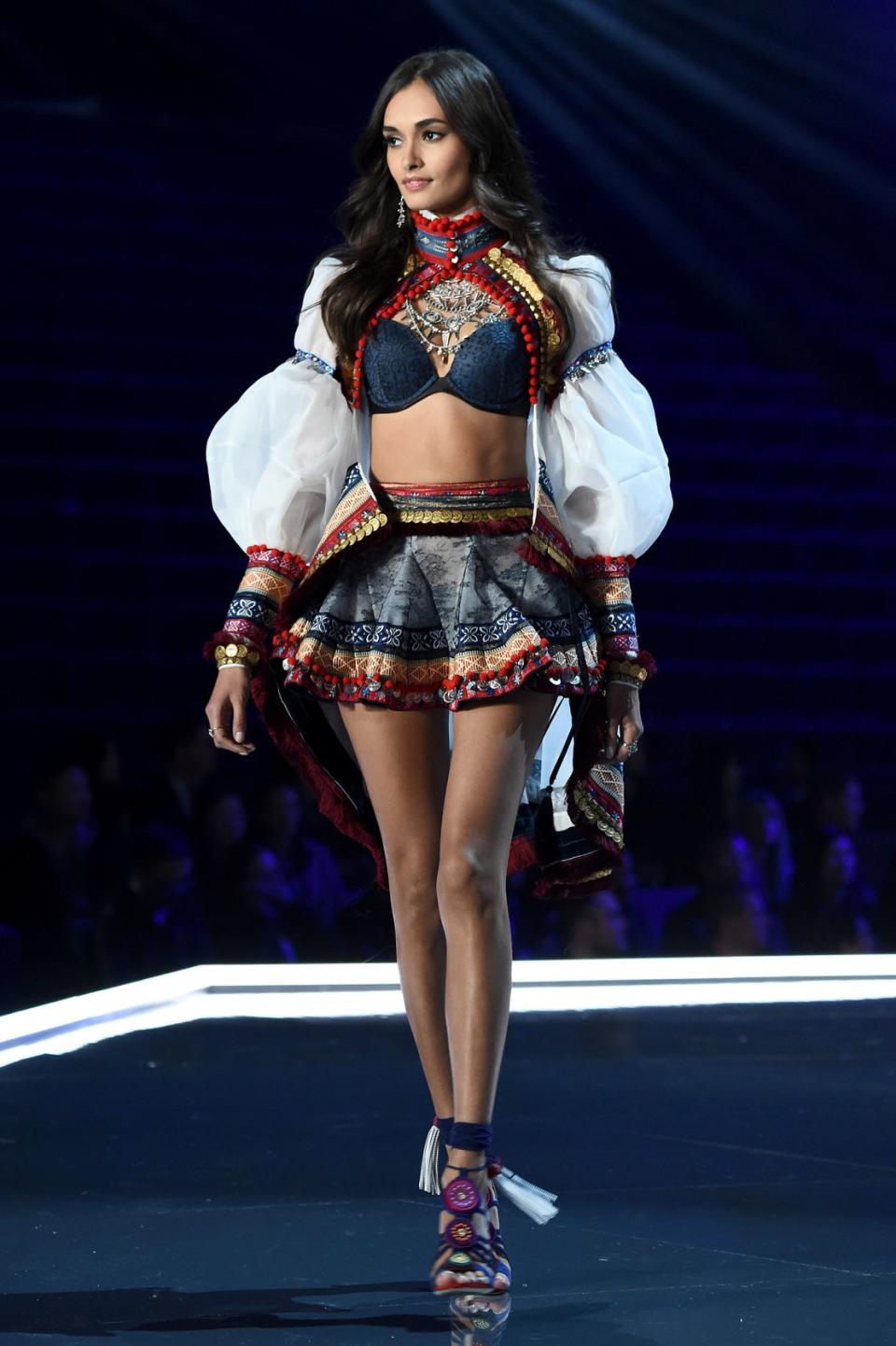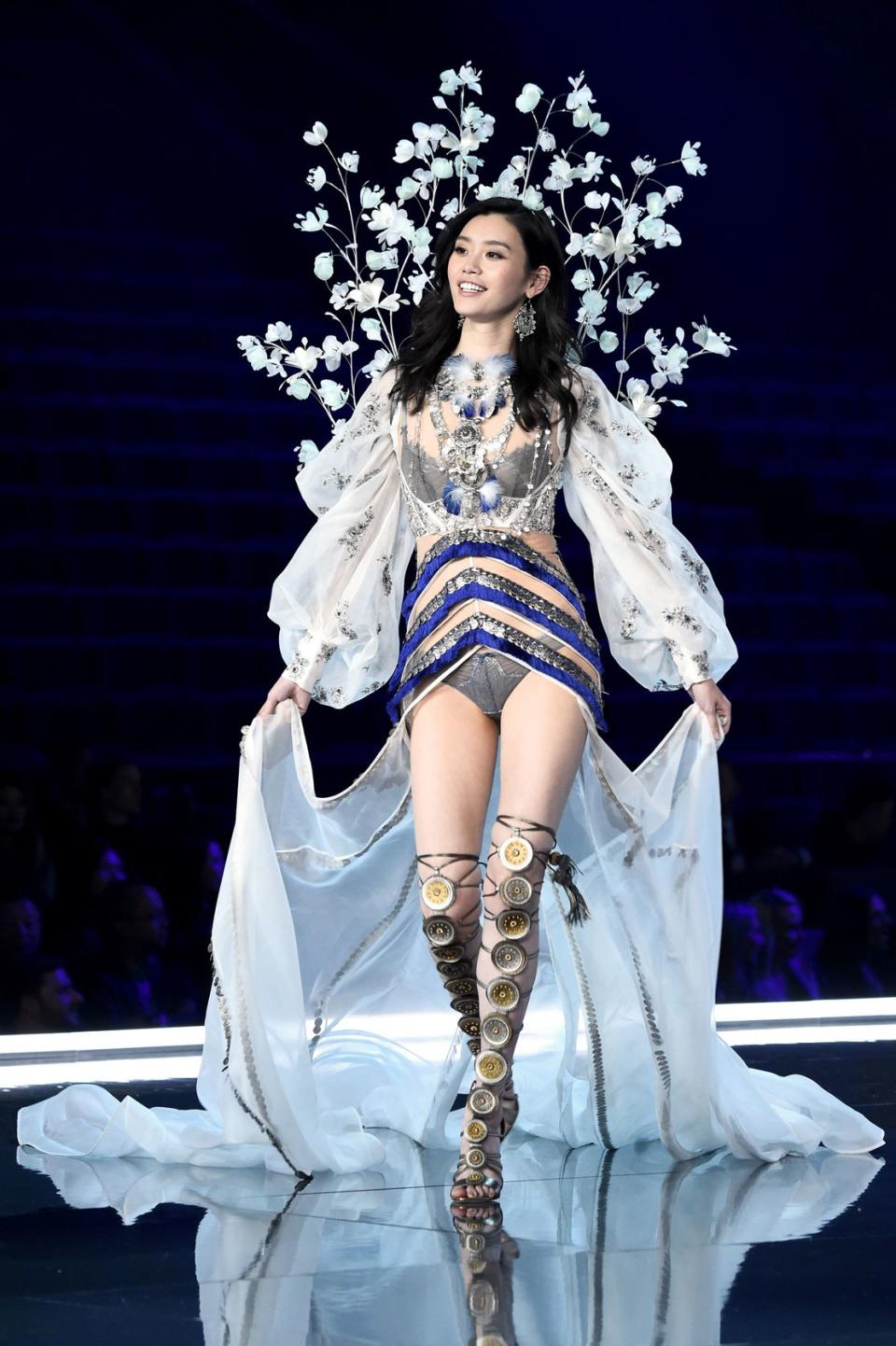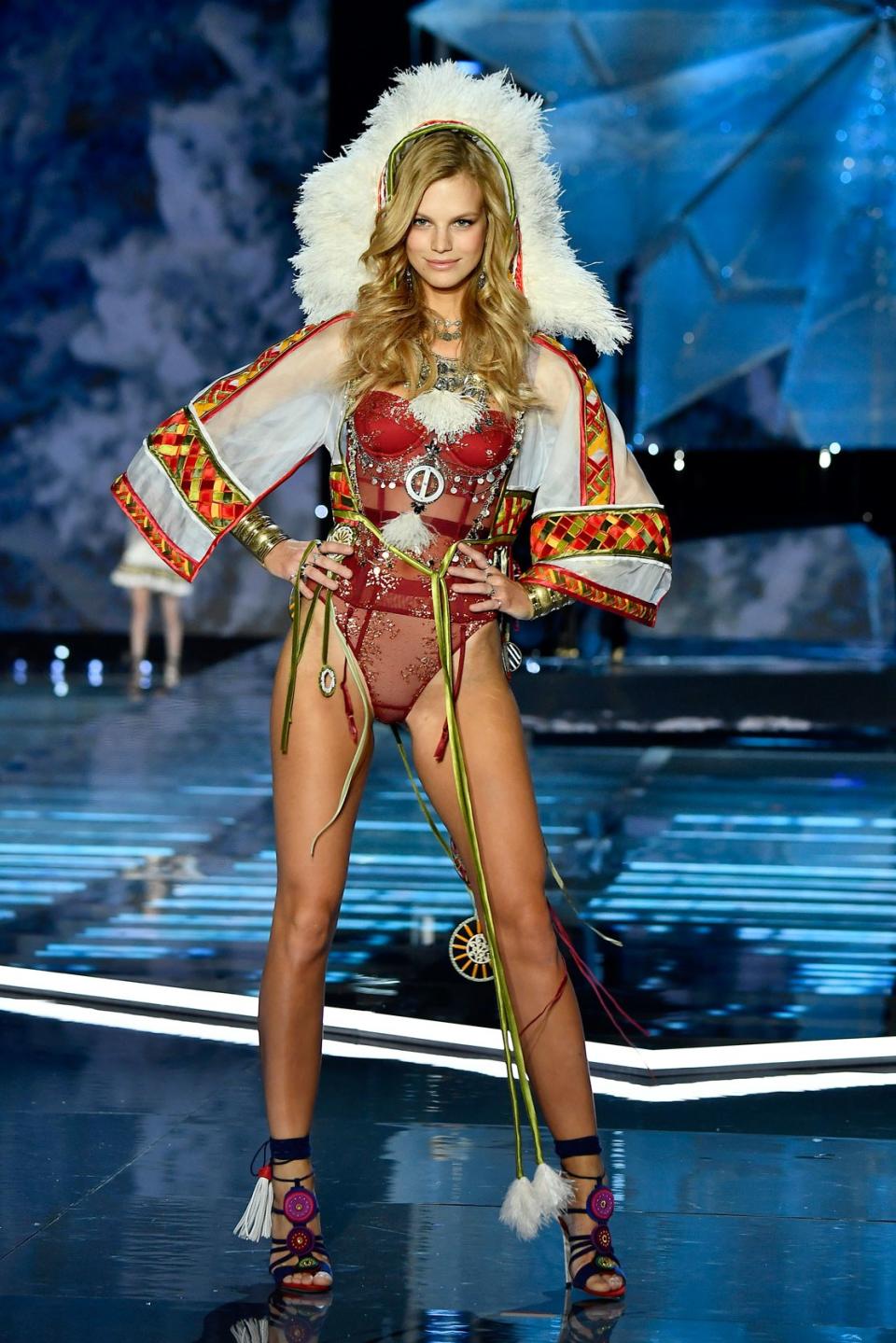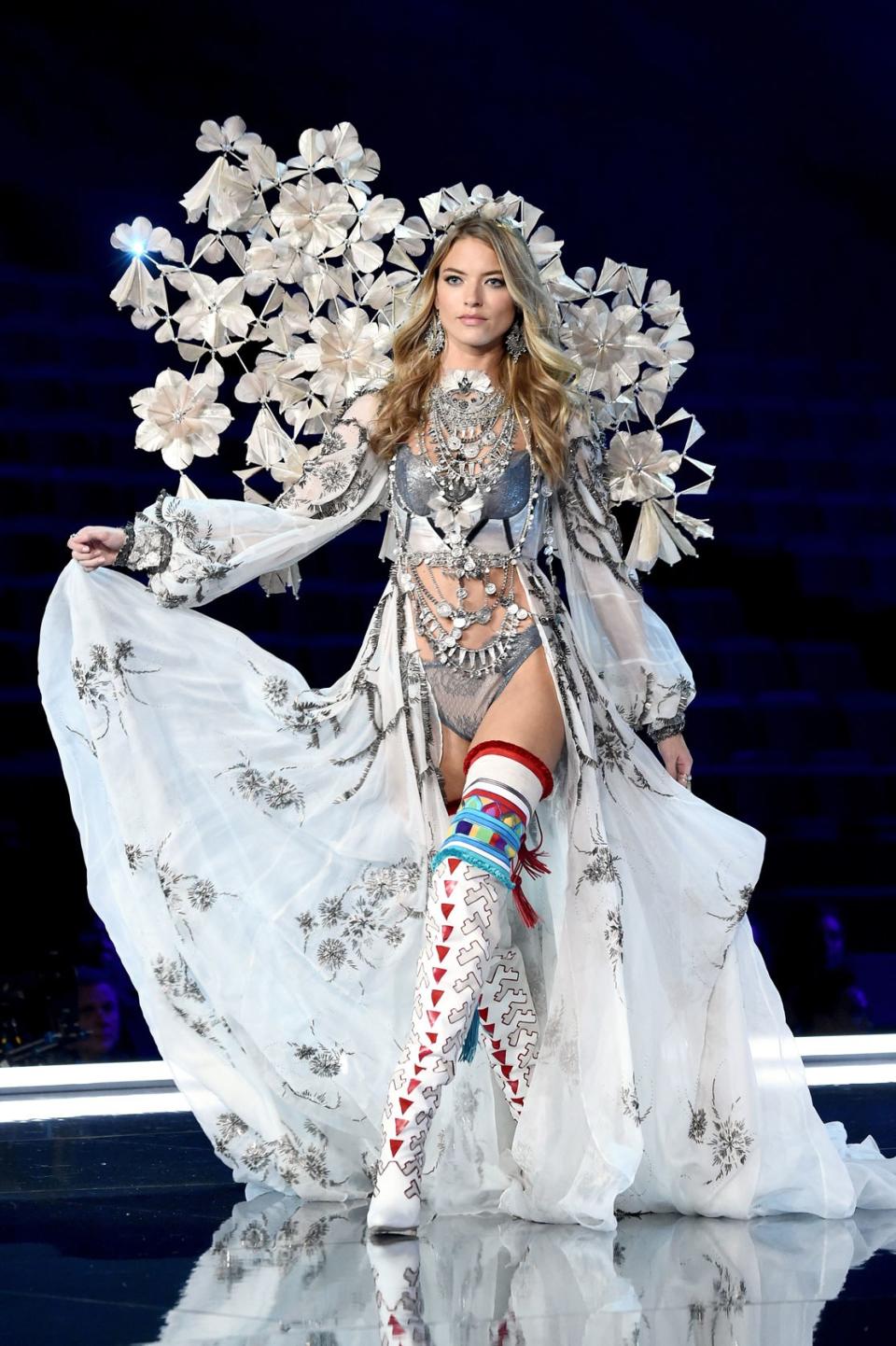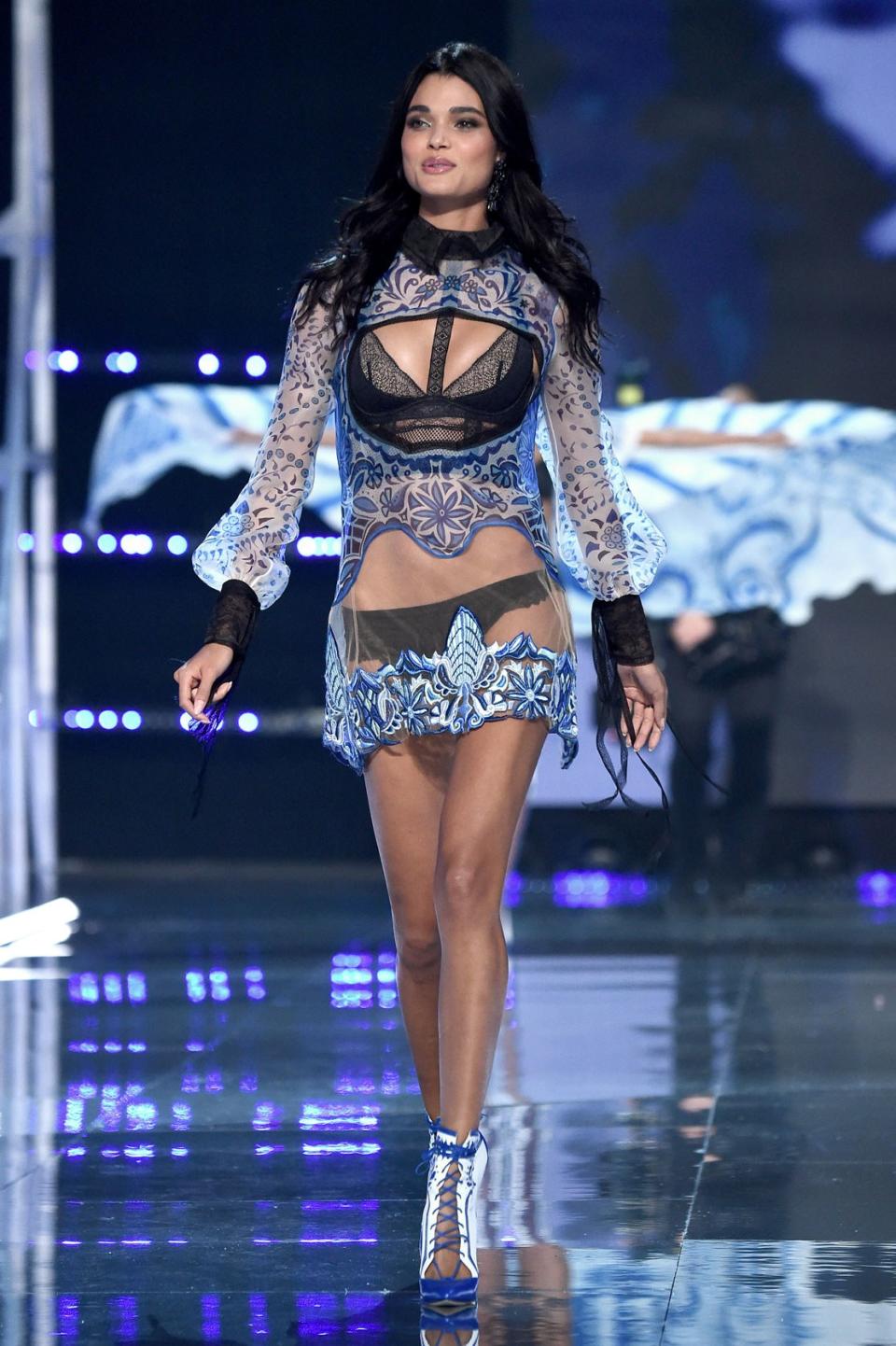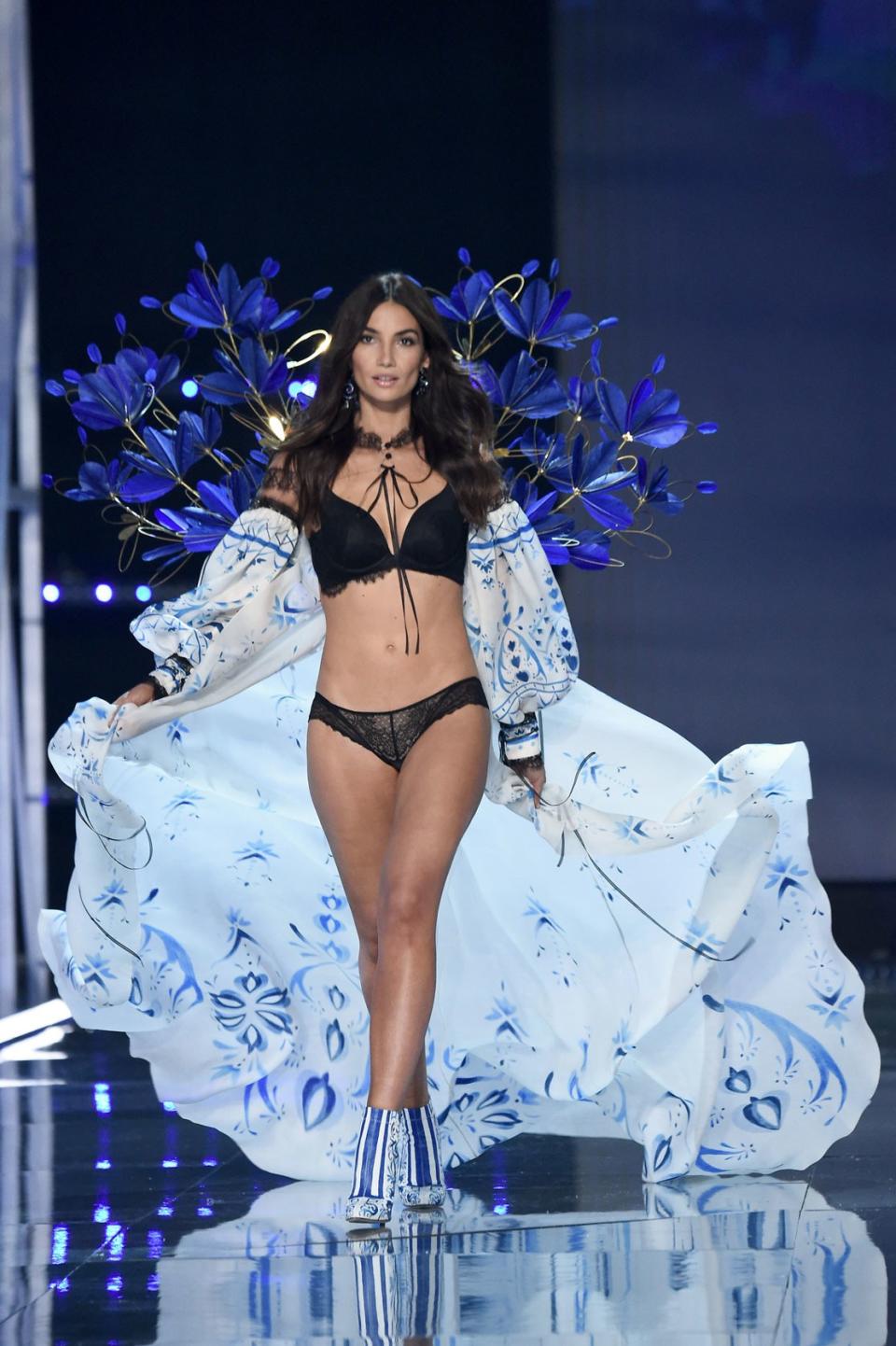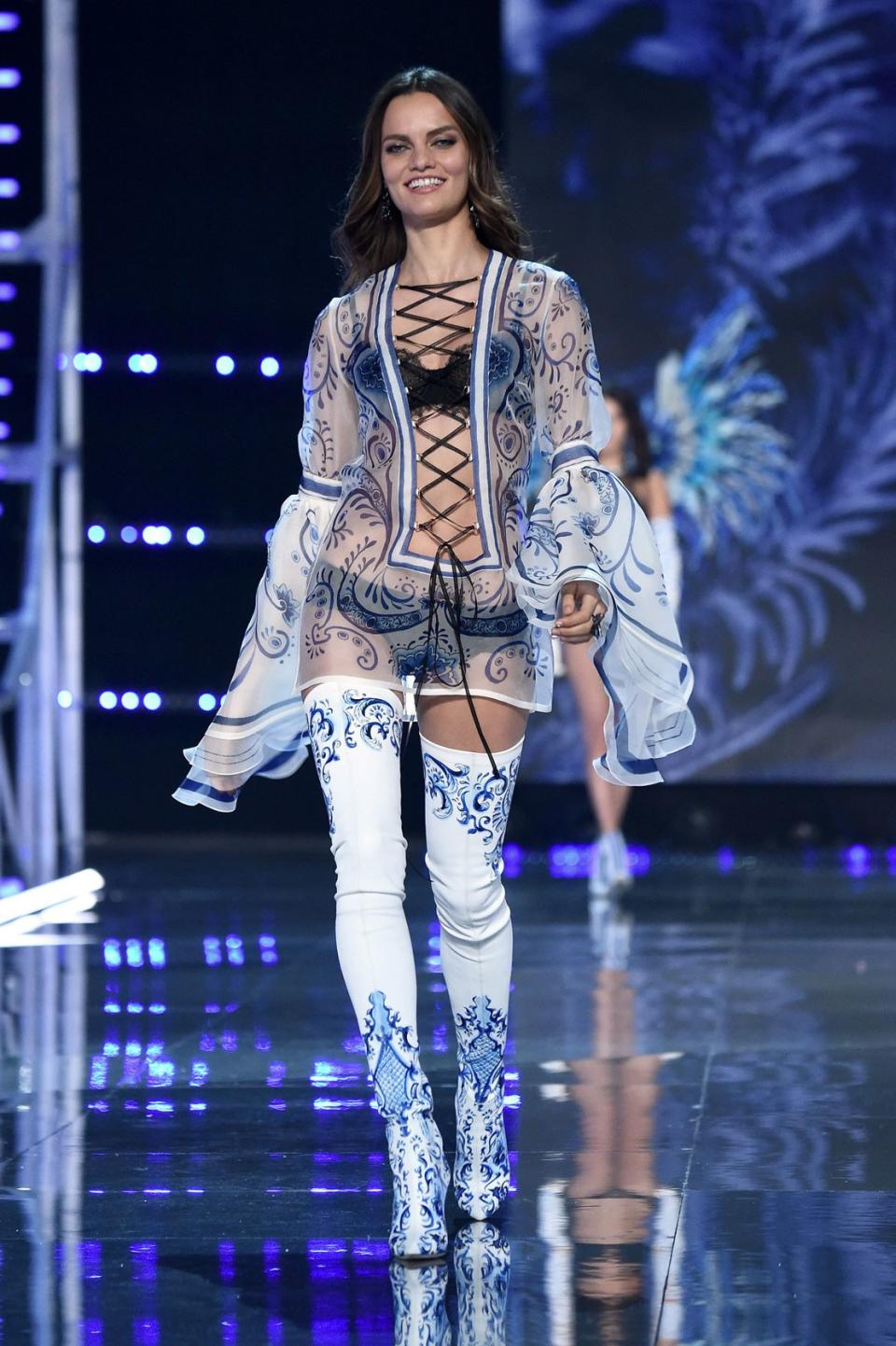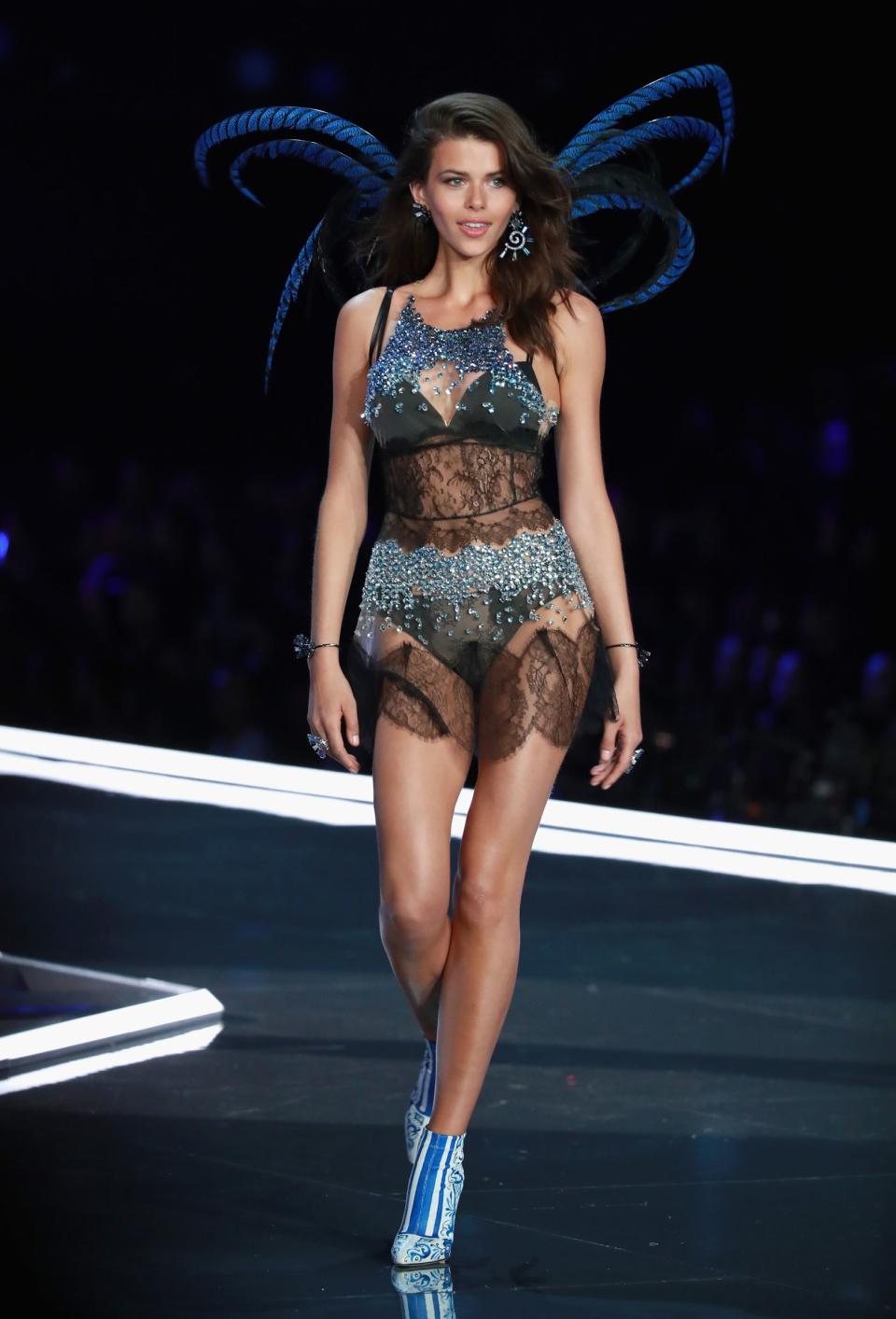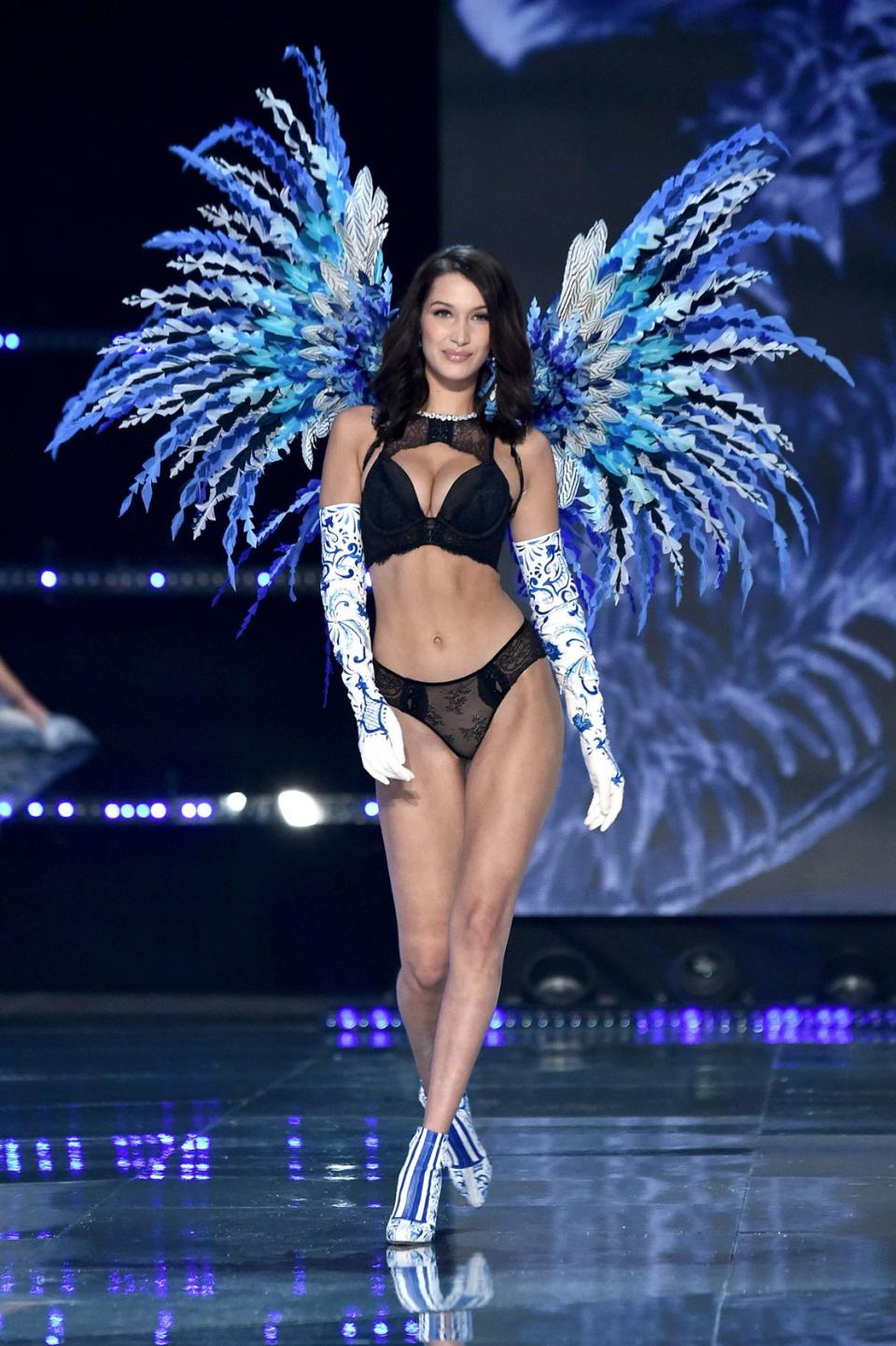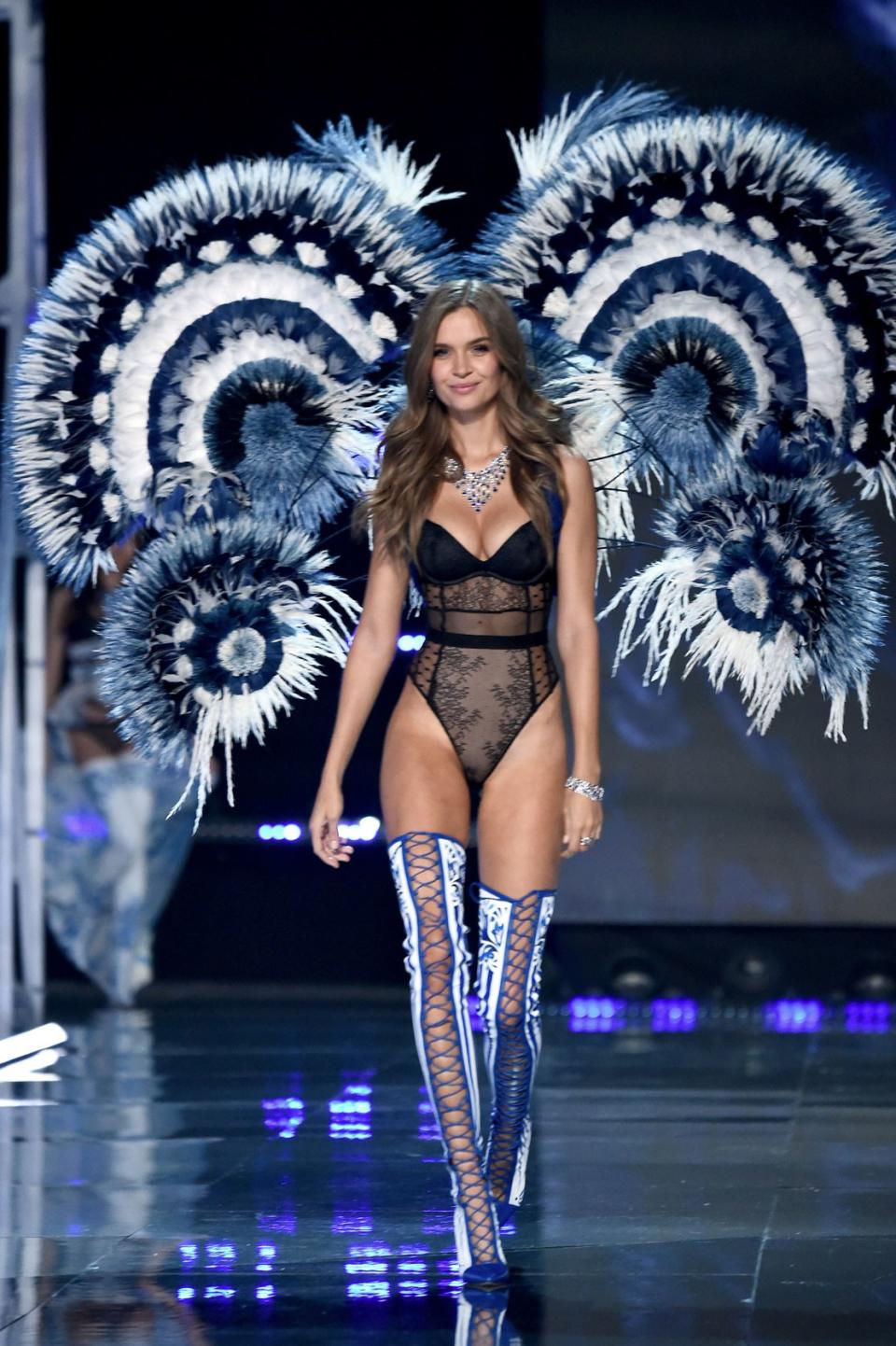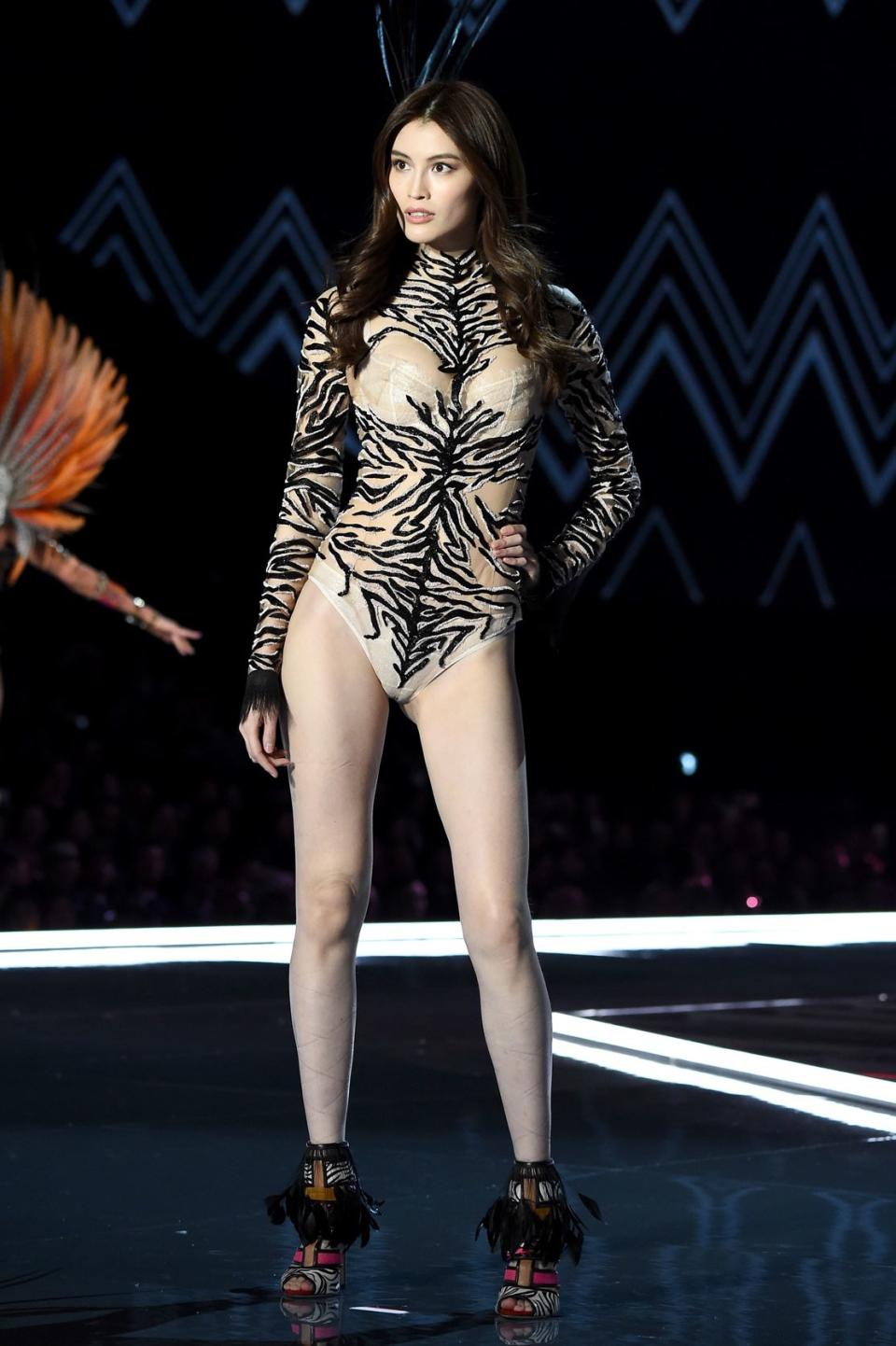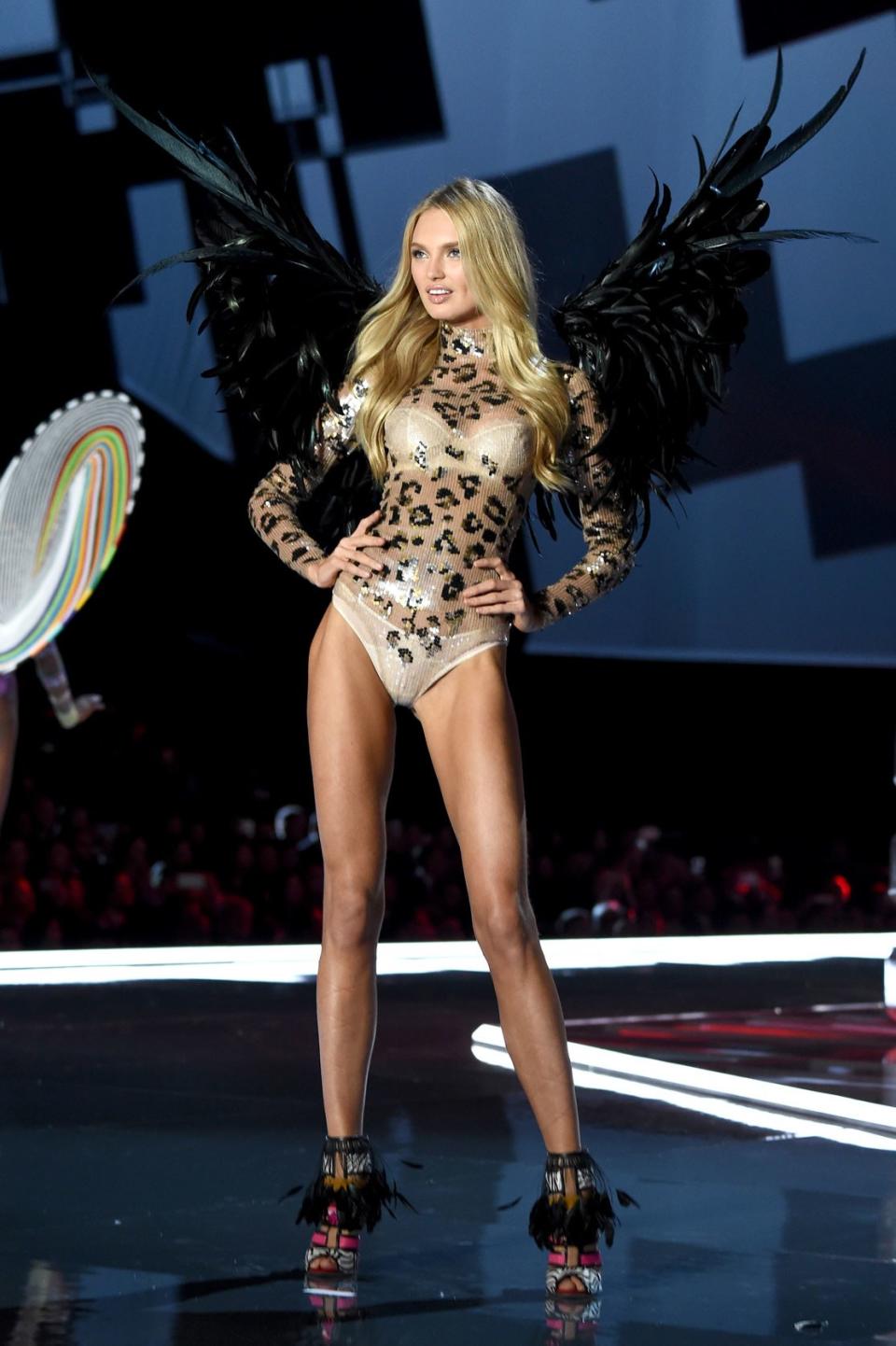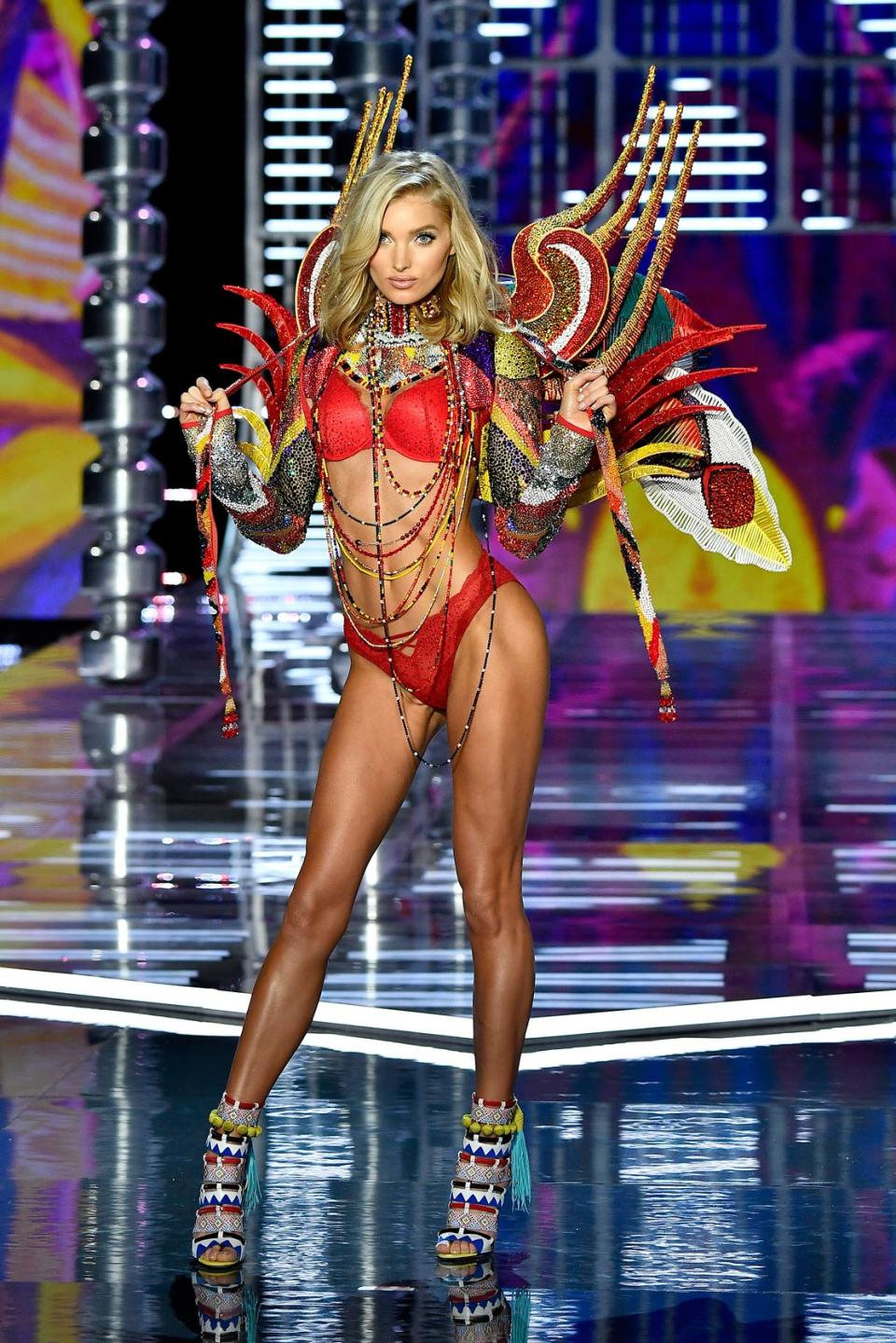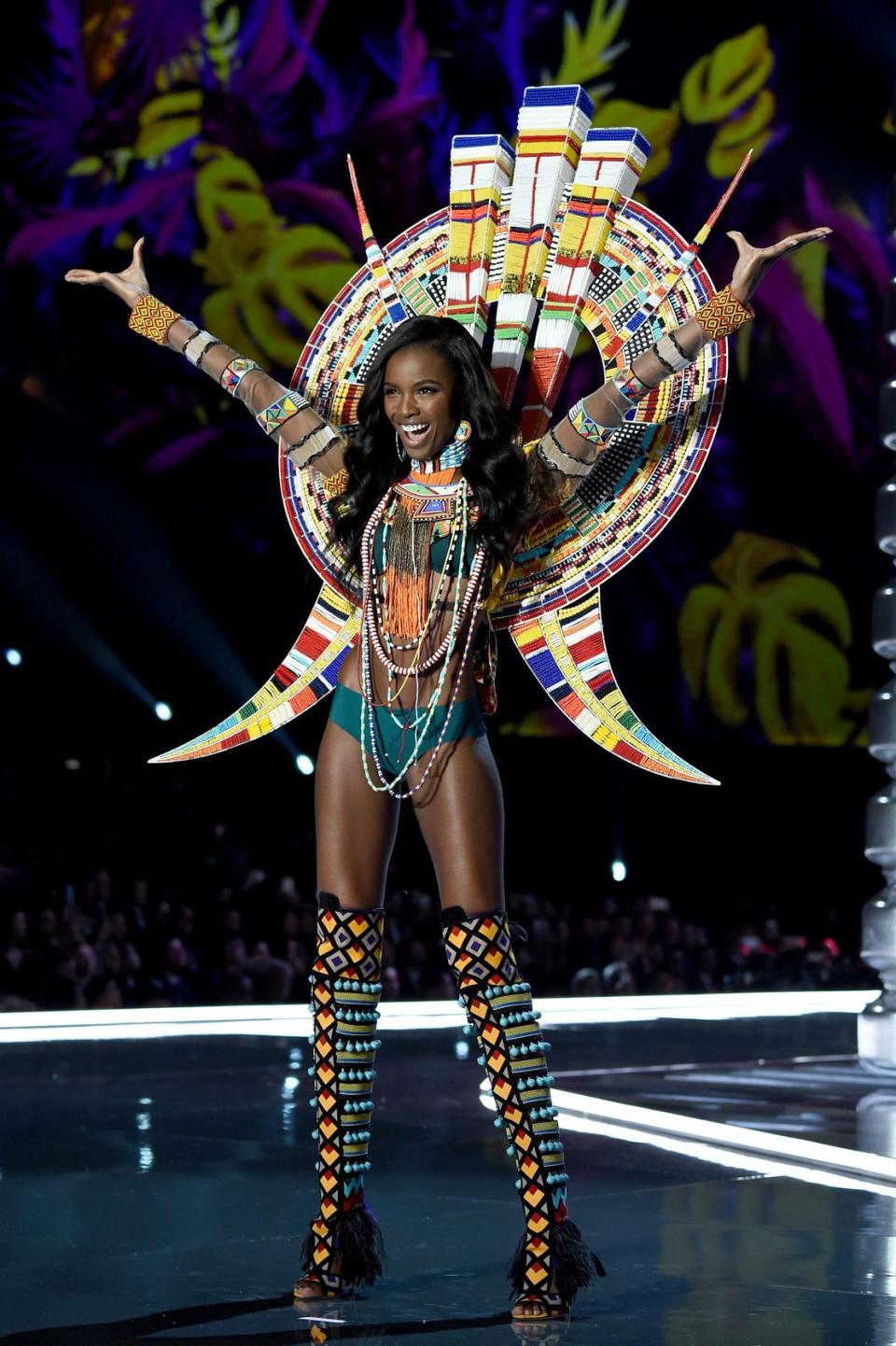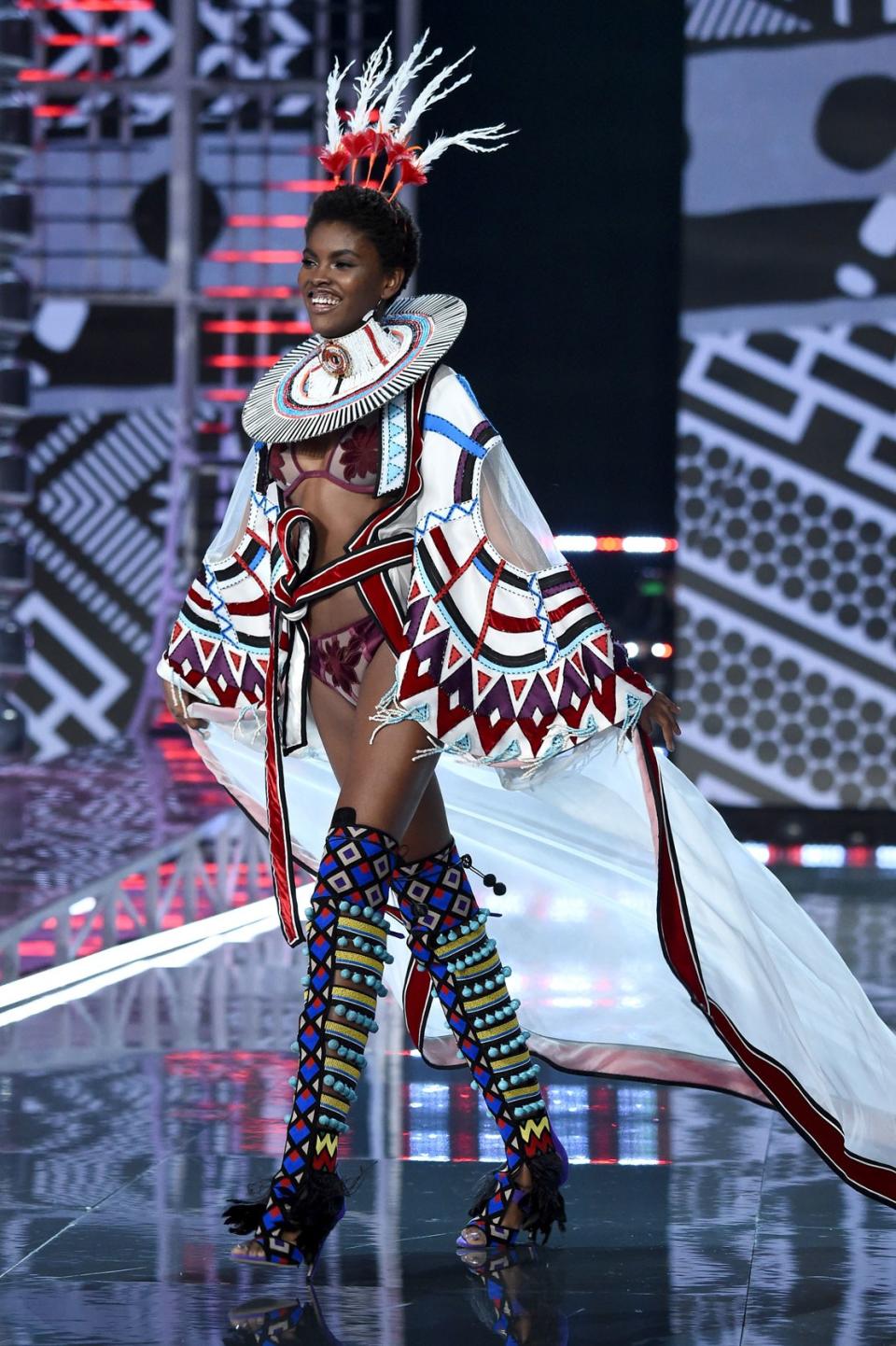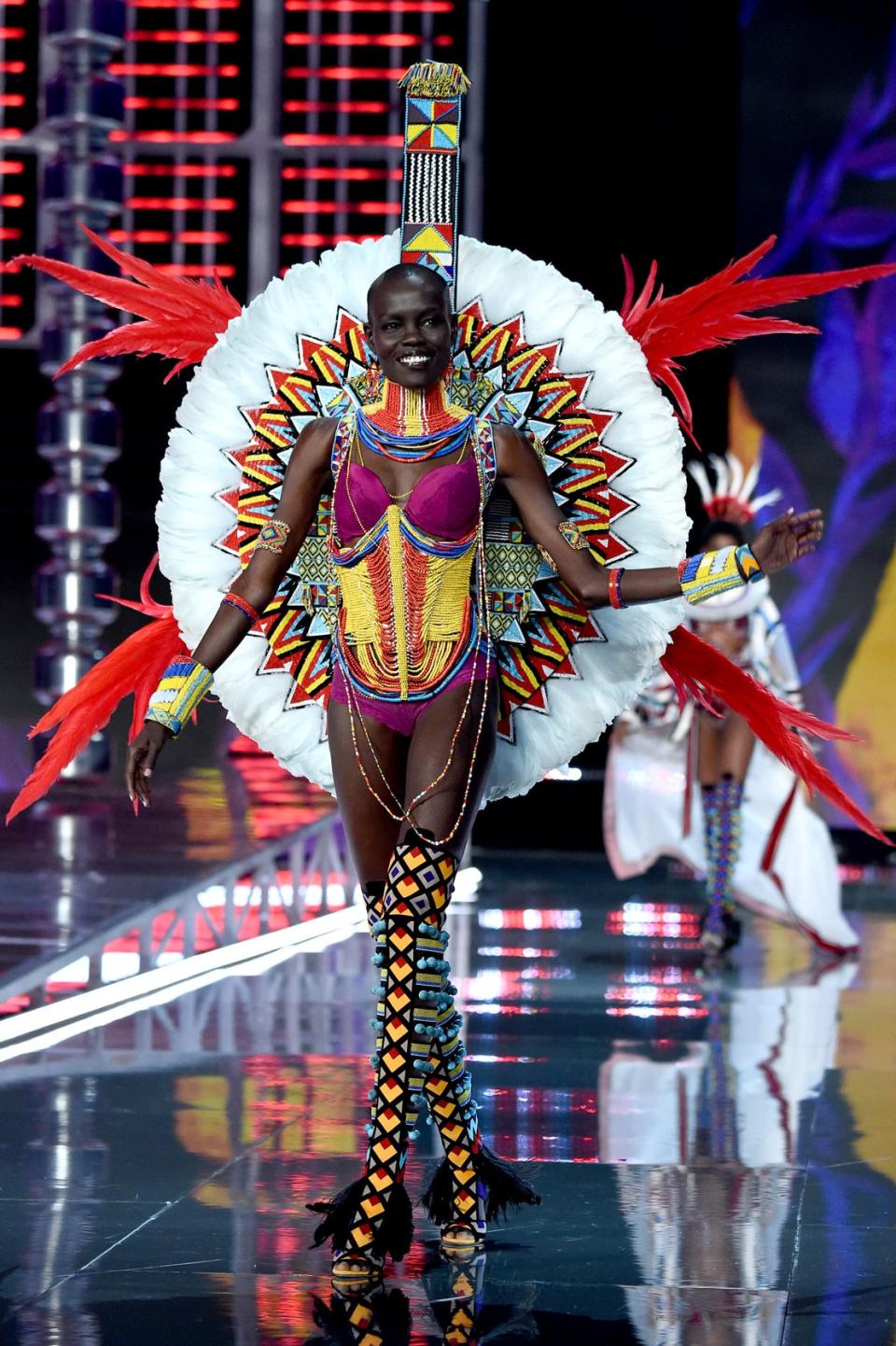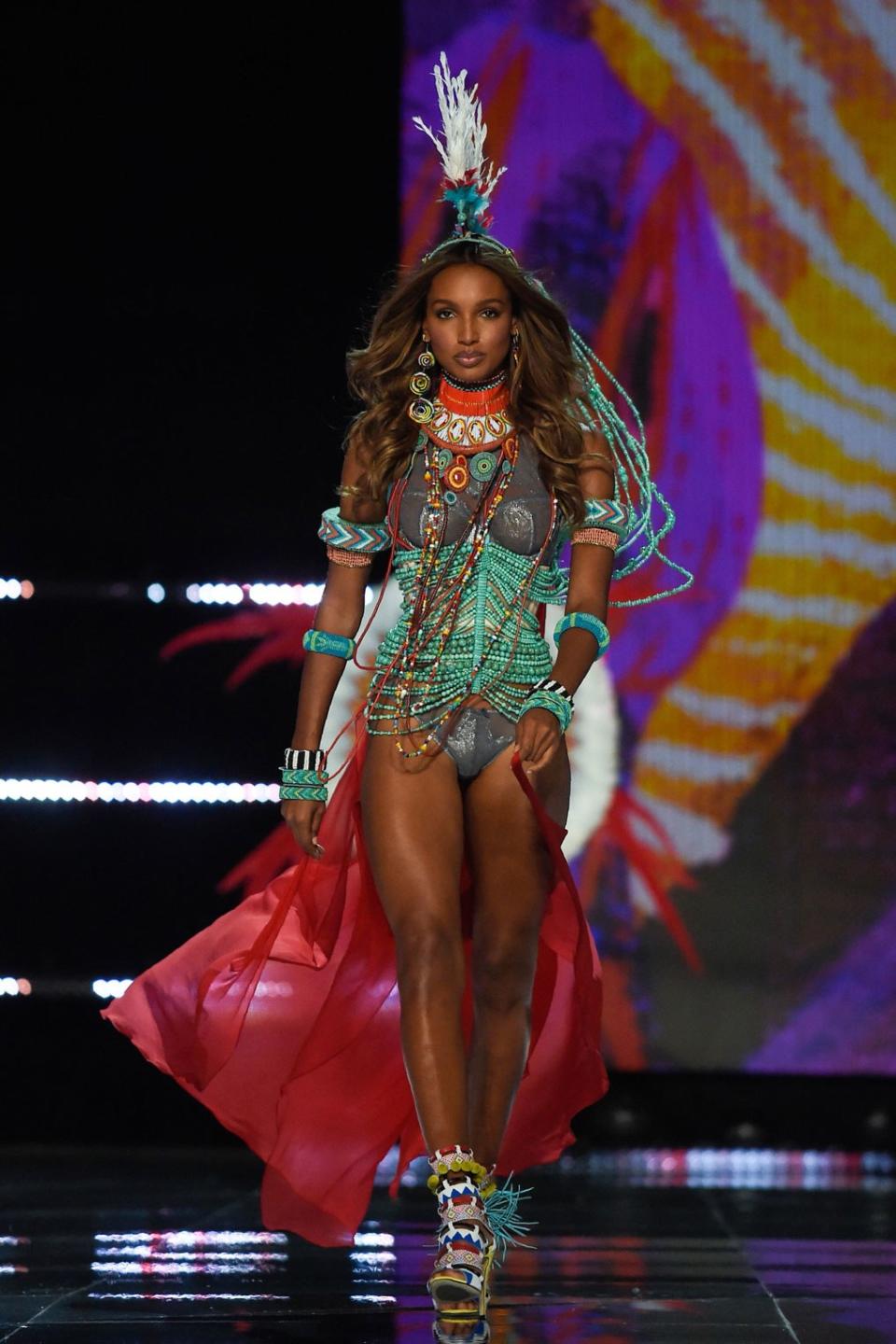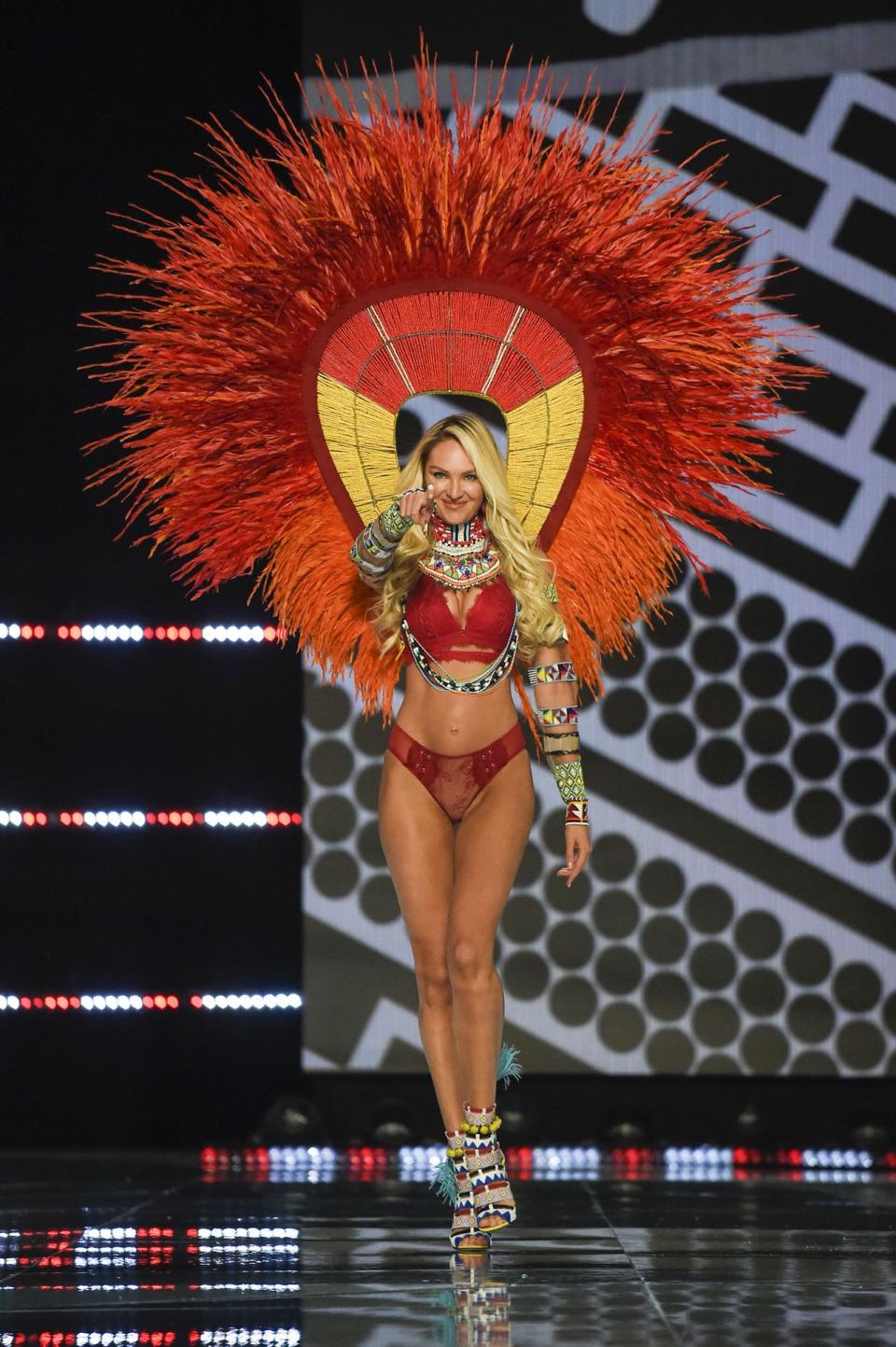“We’re Nobody’s Third Love, We’re Their First Love”—The Architects of the Victoria’s Secret Fashion Show Are Still Banking on Bombshells
Does the Victoria’s Secret Fashion Show need an overhaul? That depends on whom you ask. Internally, Victoria’s Secret believes it has many good reasons to stick with the Angel wings and status quo. Here’s one: Last year the show, which was filmed in Shanghai, China, was seen by some 1.6 billion people in 190 countries, a 45 percent increase over 2016. Victoria’s Secret’s critics, in contrast, see mounting evidence of a cultural shift that has both influenced and been impacted by changes in fashion; a social media–savvy generation that expects to see themselves reflected in advertising and marketing; and, not least of all, a shift in the lingerie business itself. Maybe you’ve heard of Rihanna’s little project, Savage x Fenty?
To start with the runways, it’s true that Victoria’s Secret bombshells were once deemed “too big” for high fashion. But thanks in part to their embrace by key designers—the Fall 2010 Marc Jacobs for Louis Vuitton show starring the curvaceous Elle Macpherson, Bar Refaeli, and Laetitia Casta comes to mind—and the subsequent loosening up of who belongs in the spotlight and who doesn’t, the 2018 runways look a lot different than they did a decade or two ago. They are less white, less young, and not as overwhelmingly thin. Victoria’s Secret gets credit for being a conversation starter, but the brand is not part of the evolving discussion around size diversity now. Nineteen new faces will walk this year’s show, and none of them remotely approach plus-size, or curve, to use the new parlance. In many ways, the discussion around Victoria’s Secret is not about who it’s letting in, but who it’s still keeping out. If Ashley Graham, who touted her 42-30-46 measurements onstage at Vogue’s Forces of Fashion conference last month, can walk Michael Kors, why not Victoria’s Secret?
The lingerie industry itself looks newly inclusive, with a wave of newcomers touting body positivity—not airbrushed perfection. Upstarts like Universal Standard’s Polina Veksler and Alex Waldman, who put a trans woman in their Foundation campaign and whose pieces sell in sizes from 00 to 40. And disruptors like ThirdLove, which is backed by the former CEO of Victoria’s Secret stores. Perhaps no threat to Victoria’s Secret’s dominance is more mortal than Rihanna, whose Savage x Fenty show made headlines when pregnant model Slick Woods walked the runway in pasties, a strappy teddy, and stilettos. She gave birth later that night. Post-delivery, Woods shared an Instagram photo of herself from the show and captioned it this way: “I’m here to say I can do whatever the fuck I want whenever the fuck I want and so can you.”
To be sure, VS has harnessed the power of social media, too. When Kim Kardashian West’s stylist approached the company with an idea for Halloween costumes last month, Victoria’s Secret lent lingerie and Angel wings from past shows. (Kendall Jenner walks the VS runway, but not her curvier sisters.) The resulting photos were seen by nearly 500 million of the family members’ cumulative followers. Those are sexy numbers, but a June report indicated that comparable sales at Victoria’s Secret are down, as is the company’s market share.
It was in this context that I sat down with the chief architects of the Victoria’s Secret Fashion Show: chief marketing officer of L Brands, Ed Razek, and executive vice president of public relations at VS, Monica Mitro, to discuss what, if any changes, we’ll see when the show is taped today at Pier 94 in New York, and on December 2, when it is slated to air. This interview has been edited and condensed.

Are you happy to be back in New York after Shanghai and Paris?
Monica Mitro: The first show we did was in New York in 1995; this is bringing it home.
Ed Razek: We didn’t know much about doing a show then; we certainly never thought it would be this.
Mitro: The reason we did a show in the first place is because our chairman, Les Wexner, said to all of our businesses, “We’re fashion businesses; we need to be doing fashion shows.” This was in Columbus, Ohio.
Razek: The idea of a lingerie fashion show was absurd [at the time]. The main question on anybody’s lips was: Why are you even doing one? It’s accepted dogma now that you can do one; in fact, several [brands] have done them around the world since then. But at the time it was impossible. At that point women basically had five bras and five pairs of panties—three white bras, one nude bra, and one black bra that they might’ve worn twice a year. The notion of lingerie drawers, and of colors, patterns, mix-and-match, and fashion . . . . It was a revelation.
It’s 23 years later, and the lingerie business is radically different. Victoria’s Secret has—what is it?—a third of the market share, but there are new companies, some with former Victoria’s Secret people involved, some direct-to-consumer, some with inclusive advertising. How are you responding to those shifts?
Mitro: I feel like our runways have been culturally diverse for a long time and that we’ve always celebrated our models’ backgrounds. I think we were one of the first to tell women to wear their natural hair, and that was a huge headline [two] years ago. That’s one thing we’ve been really proud of about the show; it’s not just women who are hangers carrying clothing. They have personalities, and we care about who they are and what they have to say. I did The View years ago with Stephanie Seymour. They asked her what it was like to model lingerie, and people were so excited, because no one really asked the models to speak, no one knew who they were. Getting to know the girls, their routines, their families, their husbands, their children . . . it’s all been part of our brand, this mix of women and who they are.

Are you putting more emphasis on diversity now?
Mitro: This year—it’s kind of hard to believe, because we only have 60 women—we have 19 new faces who have never walked Victoria’s Secret before.
Razek: By the way, in 1999, 2000, after we’d done the show for a few years, none of the designers who did shows would use any of our girls. They were too “fat” was the prevailing wisdom of fashion at the time. You probably remember that. At the time the conversation was “they’re too big for us, we can’t possibly put them in our show.” Progress gets made, and part of what’s happened in our show is that the girls have just continued to get more physically fit. We don’t tell them to; they compete with one another and they work hard, they work in pairs, they work in threes. Many of them work out at the same gyms; they have complex routines. They shouldn’t have to apologize for that. Everybody keeps talking about Rihanna’s show. If we had done Rihanna’s show, we would be accused of pandering without question.
Pandering why?
Razek: Because the brand has a specific image, has a point of view. It has a history. It’s hard to build a brand. It’s hard to build Vogue, Ralph Lauren, Apple, Starbucks. You have a brand position and you have a brand point of view. The girls who have earned their way into the show have worked for it. By the way, we’ve had three pregnant models walk the show. Everybody had the conversation about Savage [x Fenty] having the pregnant model in the show. We watch this, we’re amused by it, but we don’t milk it. And all of these things that they’ve “invented,” we have done and continue to do.
I don’t want to be defensive about it, but we don’t tell the story of the Victoria’s Secret brand or the good it does, but if you’d like to hear it, I’ll tell you. In 1987, I was working for one of our businesses, The Limited, when Verna Gibson was promoted to president of The Limited stores. And Time magazine came to Columbus to ask me what it would be like to work for a female boss. That was a legitimate question from a female reporter 30 years ago. Virtually all of the bosses here have been women, and have been for 30 years. Les Wexner has given more opportunities to women in business than any other fashion mogul I can think of, made more women millionaires and multimillionaires. He doesn’t see sex in job opportunity.
We’ve been instrumental in building a cancer hospital, a breast cancer hospital, a cancer research center, a children’s hospital, a center for science and industry, a national veterans’ hospital. We’ve donated more than 1 million hours of associates’ time, hundreds of millions of dollars to women’s causes. And we’ve never said if you buy a bra, we’ll give a dollar to a cause. We’ve never promoted it. We do it because it’s the right thing to do. Nonsense gets written about us; God bless, we understand, we’re a big target, a very big target. We get it, we’re enormously successful and have been for a very long time.
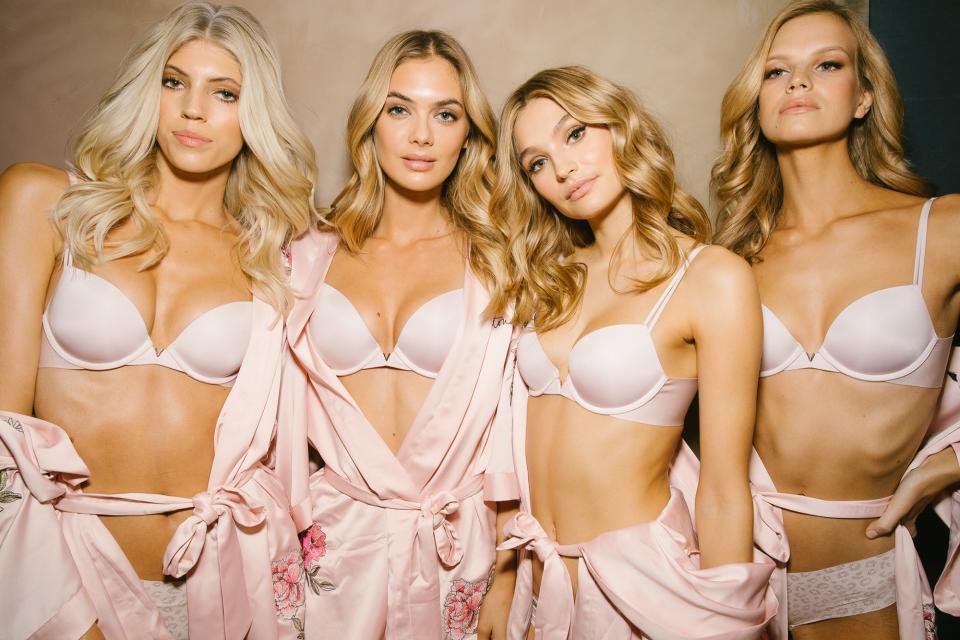
I’m glad you brought up Rihanna. There’s a young generation turned on by the multiple sizes of women in that show, and there are all sorts of different upstart brands that are putting trans women in their advertisements, women who are size 40 in their advertisements. Does VS feel the need to address the way the market is shifting in any way?
Razek: I think we address the way the market is shifting on a constant basis. If you’re asking if we’ve considered putting a transgender model in the show or looked at putting a plus-size model in the show, we have. We invented the plus-size model show in what was our sister division, Lane Bryant. Lane Bryant still sells plus-size lingerie, but it sells a specific range, just like every specialty retailer in the world sells a range of clothing. As do we. We market to who we sell to, and we don’t market to the whole world.
We attempted to do a television special for plus-sizes [in 2000]. No one had any interest in it, still don’t. Our show is the only branded special in the world, seen in 190 countries, by 1 billion 6 million people; 45 percent more people saw it last year than the year before. Our direct business is growing substantially—double digits on a monthly basis. And we made some merchandising mistakes, no question. But the number one selling bra in the brand at the moment is a bra that will sell more as a single item than a small competitor that’s been trying to make a lot of noise lately [sells from its complete range]. The dominant characteristic of that bra is that it says Victoria’s Secret multiple times. Now tell me how it’s possible that that bra would be the number one most popular bra in the marketplace if people didn’t like the brand? Particularly if young people didn’t like the brand?
Mitro: We call it logo love. Whatever we put a logo on sells. Regarding change, I feel it’s not so much about what the competitors are doing. What we’re thinking about is where is our customer? Where is she shopping? What does she want from us? We have 40,000 employees in the field that get to see and be with our customers every single day; very different from online, where you don’t get to try it on, where you have a customer over the phone who’s trying to do a bra fit for you and they can’t do it physically. We have a training program in which we certify our bra specialists, where when you go into any Victoria’s Secret store we actually have a bra-fit expert. We have people in the field reporting back to us on a weekly basis about what they’re hearing. We can make real-time adjustments. With more than 1,100 stores, we can try something in 20 stores to see if it’s working before rolling it out to the chain.
Razek: I don’t think we can be all things to all customers. It is a specialty business; it isn’t a department store. I’m always asking myself: If we do that, what is the reason we did it? Why did we include that person? And did we include them to shut up a reporter? Did we include them because it was the right thing to do or because it was the politically correct thing to do? Do they take the place of somebody who worked for a year for the opportunity and cried when they found that they got it? Yeah, we made some fashion mistakes. We were late to the party on bralettes; we were late to the party on downtown influences in our looks.
I’m curious about how the Kardashian-Jenner’s Halloween costumes came about, because that was brilliant. After that, you hardly need a fashion show. You had women who have, I don’t know, practically a billion followers combined posting those pictures.
Mitro: We’re friends with the family and their stylists. Their stylists came to us and said, we have this idea, would you guys be open to providing some of your past costumes and wings for the Kardashian girls to do their Halloween? It was one of my assistants who took the call, and she said, what do you think? And I said, let’s start going through the archives. My team in Columbus went into the distribution center, and some of the costumes were quite old, and we sent them current lingerie. When Kendall came in for her fitting she said it was all Kim’s idea.
Razek: You knew exactly when you saw the picture, you knew exactly what it was. Tell me that with any other brand. By the way, every year somebody tells us we should eliminate the wings, that women don’t want to be considered angels, or they don’t want to be this or they don’t want to be that. And it’s like, okay, maybe some don’t. And that’s okay. We’re not trying to impose our will on anyone. We have a brand, we have a brand position. You saw the wings and thought Victoria’s Secret instantly, as did the world. That’s a pretty powerful brand position.
I want to talk about the Instagram generation. I assume you have lots of data; do you see a shifting desire or shifting needs? Are they looking for something new from Victoria’s Secret?
Razek: I’ve been off Instagram for a few months now—I just can’t take all the people trying to beat up on the models or all the people trying to tell me what an idiot I am this time of year. The hate that’s on social media, it’s extraordinarily toxic. Sara Sampaio is constantly being criticized for being too fat. Sara Sampaio? Seriously? Where does it end? Do I think about diversity? Yes. Does the brand think about diversity? Yes. Do we offer larger sizes? Yes.
Mitro: 30A to 40DDD is our range.
Razek: So it’s like, why don’t you do 50? Why don’t you do 60? Why don’t you do 24? It’s like, why doesn’t your show do this? Shouldn’t you have transsexuals in the show? No. No, I don’t think we should. Well, why not? Because the show is a fantasy. It’s a 42-minute entertainment special. That’s what it is. It is the only one of its kind in the world, and any other fashion brand in the world would take it in a minute, including the competitors that are carping at us. And they carp at us because we’re the leader. They don’t talk about each other. I accept that. I actually respect it. Cool. But we’re nobody’s third love. [Editor’s note: ThirdLove is a competitor that has received investment from a former CEO of Victoria’s Secret stores.] We’re their first love. And Victoria’s Secret has been women’s first love from the beginning.
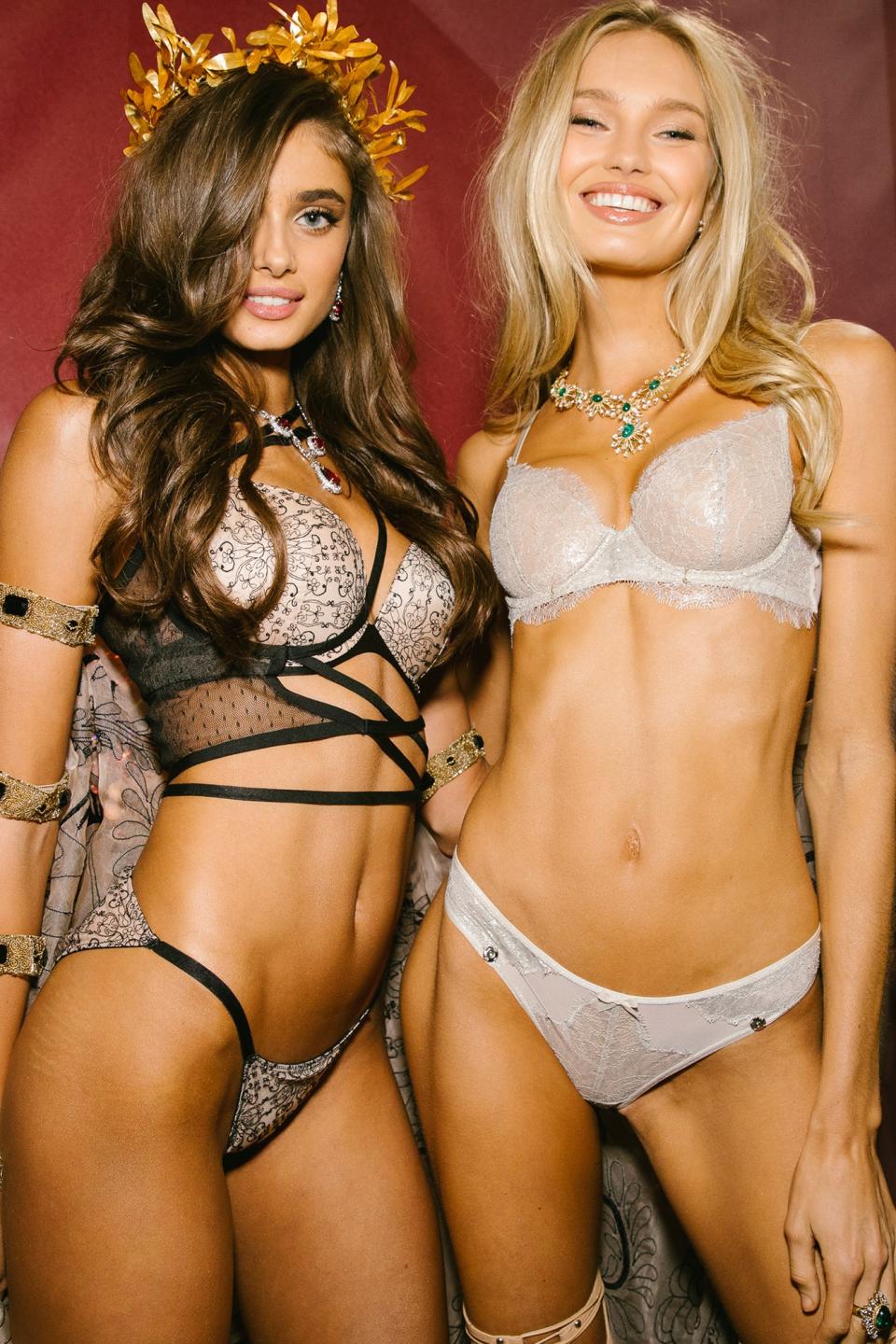
You say that people are critical of Sara Sampaio because they perceive her to be too heavy. But there is a culture around the Victoria’s Secret Fashion Show where the models are aggressively fit. And we’ve heard stories—I don’t know if they’re apocryphal or not—that Adriana Lima stops drinking liquids the week before the show.
Mitro: This is her 18th year. She is 37 years old. She is so driven. And talk about age diversity. There aren’t a lot of brands that continue to use models past a certain age. But she’s an athlete; she boxes. That’s her routine, so if she’s with some nutritionist who says, “Try this, try that,” we don’t know. But I have to say to that point, Jourdana [Phillips] is one of the models who came in for a fitting, and I was looking on her Instagram feed last night and I saw her at the gym, and her quote made me feel so emotional for her, because when people say real women have curves and they call our models skinny . . .
Razek: They skinny-shame them.
Mitro: So Jourdana said, “To all those kids I went to school with who called me Skinny Mini, look at me now.”
Razek: Yes, they are aggressively physically fit, but the operative word is fit. Should they apologize for being fit? This is their profession, and this is the penultimate [sic] expression of their profession. And it can make models. It made Heidi’s [Klum] career.
Mitro: When we look at things that really hurt our feelings, when they’re bullying girls on Instagram, I have to say, too, there are so many fans. “Who’s opening the show?” “Who’s wearing the Fantasy Bra this year?” We keep hearing stories during fittings: “I can’t believe it; I used to admire these girls, I had them on my wall, and now I’m standing next to them backstage. I can’t even believe this is happening.” And they cheer each other on. And there’s this happiness happening backstage. It’s this big party for the girls. And also for the fans.
Razek: Seventy percent of the audience is women.
Mitro: So I just feel like there are haters, but there is also a huge fan base.
Razek: The haters bother me. Do you get haters?
Of course. Let’s talk about #MeToo. The first stories broke just before the show last year, when you were in China, but here you are back in New York. Has the conversation over the past year made you reconsider anything about the show?
Razek: I’d like to answer that. The two stories that broke, let me be specific about them, one of them was about a photographer who had dated a woman, had nothing to do with us, who was offended by him. We stopped working with him and did a full investigation. The other one—I had a model complain to me that she felt uncomfortable with him and I fired him an hour later. I didn’t investigate it; I didn’t do due diligence. I fired him an hour later, because the models’ comfort is important to me. Nothing matters more. Over 25 years, 7,500 photo shoots, we had one incident and handled it immediately. I’d take that record. I had a hairstylist on a shoot who was rude to one of the models and I fired him on the spot. He asked, “How do I go home?” I said, “Swim.”
In the wake of #MeToo, how has the backstage atmosphere changed?
Razek: We didn’t have changes to make. The show position has always been a very private place. And we’ve always respected that position.
Mitro: There has always been a room that we call the “naked room,” because that’s the room where they have to change into their lingerie. And there is no one allowed in that room except their dressers. It’s a place where we definitely don’t want photographers, and they have two female guards outside of the tent, and that’s where they put on their jewelry, their wings, and everything else. But that’s something because we’re a lingerie brand, so we’ve always done it, just because it’s so intimate. To Ed’s point of what has changed, it’s been a constant for us because we’re a lingerie brand.
There was a June report stating that comparable sales at Victoria’s Secret were down. As was market share. How do you respond to numbers like that?
Razek: Retail is constantly moving. We’re not competing against small lingerie competitors, we’re competing against a woman’s dresser drawers. So if we’re not providing new on a constant basis, we won’t succeed at the level of our size. Because we’re the 800-pound gorilla in the space, we have to have our fashion right. And we have to move it constantly. And it hasn’t moved fast enough. We have an expression in the business: “Fall on your face, not on your ass,” meaning you’re moving forward so fast that if you’re going to make a mistake, make a mistake on the forward side. Don’t hold onto the past. Les Wexner has always had that philosophy, and he continues to push the businesses. But he was absolutely right when he said two years ago that Victoria’s Secret had stalled. It had. But how do we have this one bra that outsells the [entire offering] of this noisy little competitor on its own? One bra that happens to have a Victoria’s Secret strap on it? What that tells me: Women want the brand to win. They want to buy the brand. And it is their first love and their first choice.
You said that fashion moves on, so what should we expect that’s new from the show?
Razek: I think what you’ll see with the Mary Katrantzou collection, like the Balmain collection last year, is that the designer influences on our brand are significant and important and they move it forward. The Katrantzou stuff this year—I might’ve been a skeptic at the beginning—is explosively energetic and beautiful and fun and an affirmation.
Mitro: We’re also doing a lot this year in the show that is see-now-buy-now. We always put our lingerie in the show, but we’re doing something day of show that’s live from the show all day, so there are some things, if people love the backstage robe, and they love the official bra of the show, we’re taking them on that journey. We’re working with Charlotte Tilbury. She really has the same DNA that our brand does, so we’re collaborating with her. When she does the look of the show, we’ll do that live backstage and people can follow along and archive it. We also have a new set designer, Misty Buckley. She’s young and cool, and her ideas are so interesting, the way she’s made Pier 94 look like a jewel, with all the facets of a diamond. We also put sport in the show. So there’s a whole section, a combination of sport and logo and lace and urbanwear that we’ve never really done before. We’re celebrating what we’ve done in years past, which is about the Angels, but we tried to look at it from a different perspective.
See Every Look From the Victoria’s Secret Fashion Show 2017
See Every Look From the 2017 Victoria’s Secret Fashion Show

